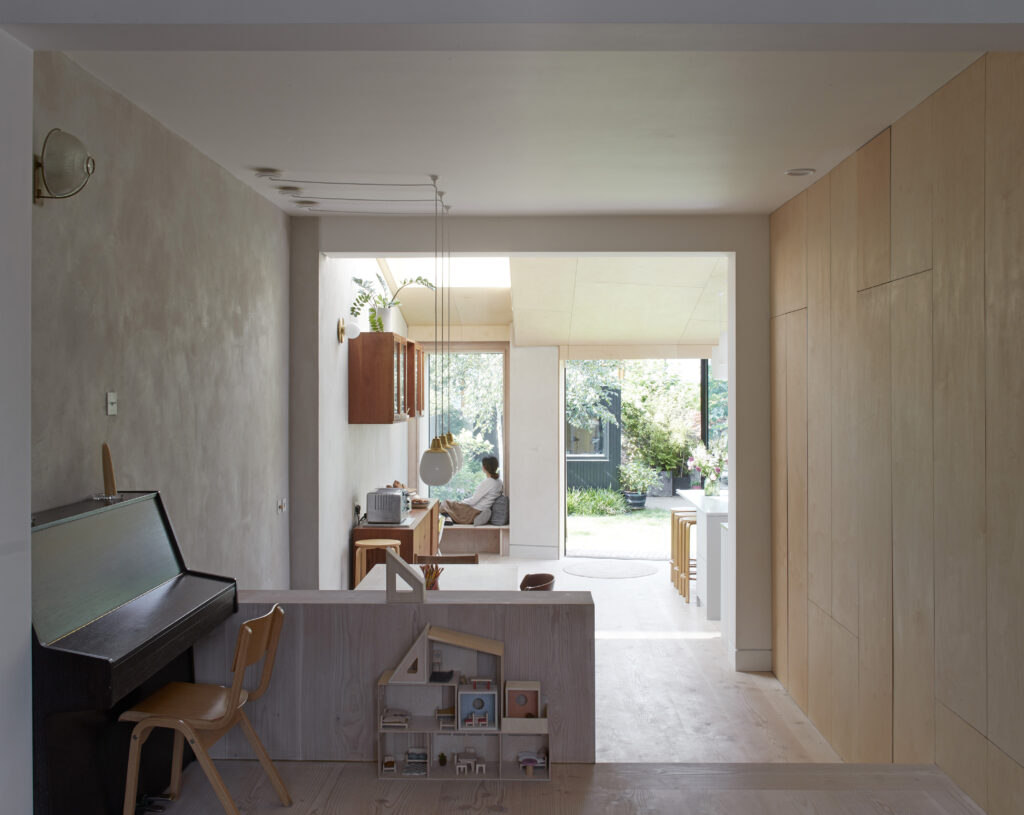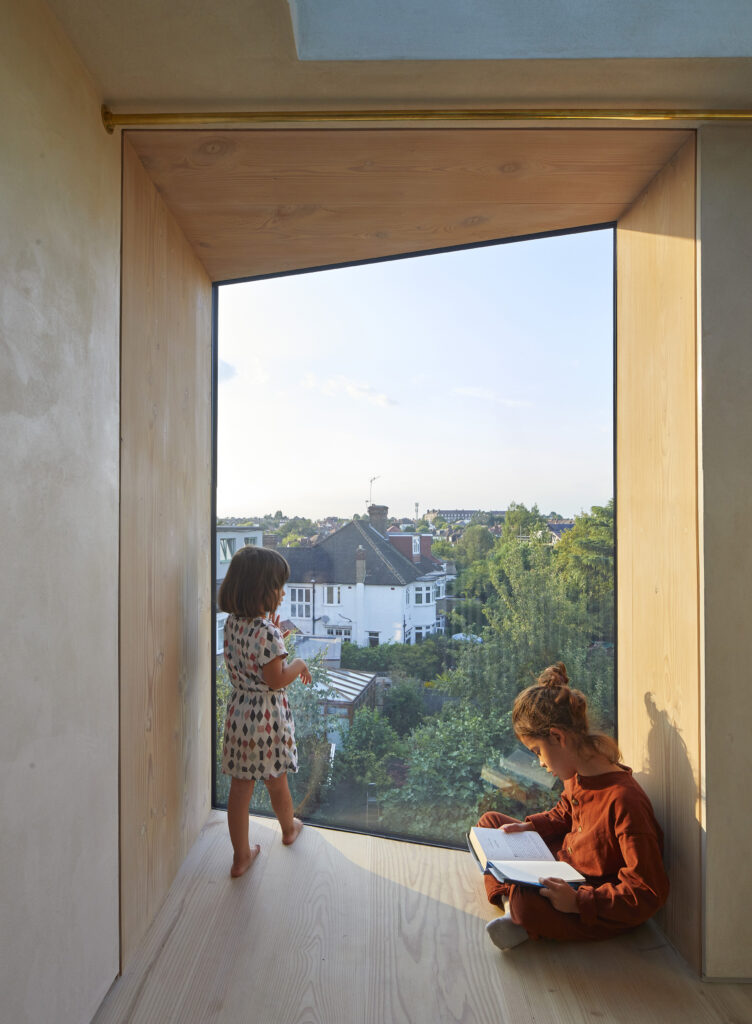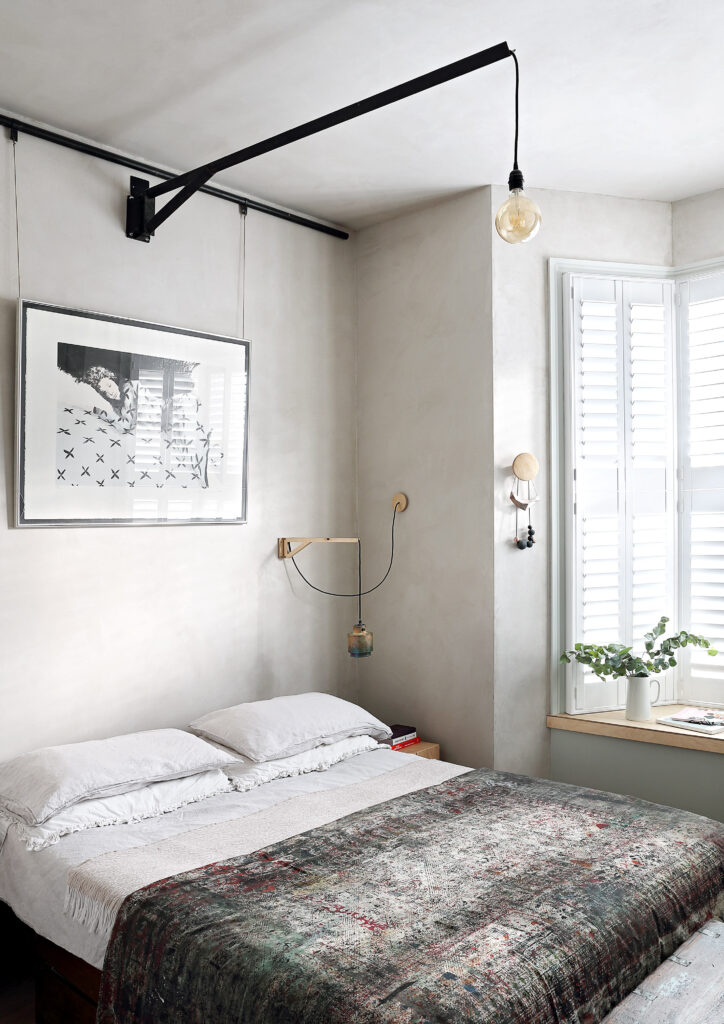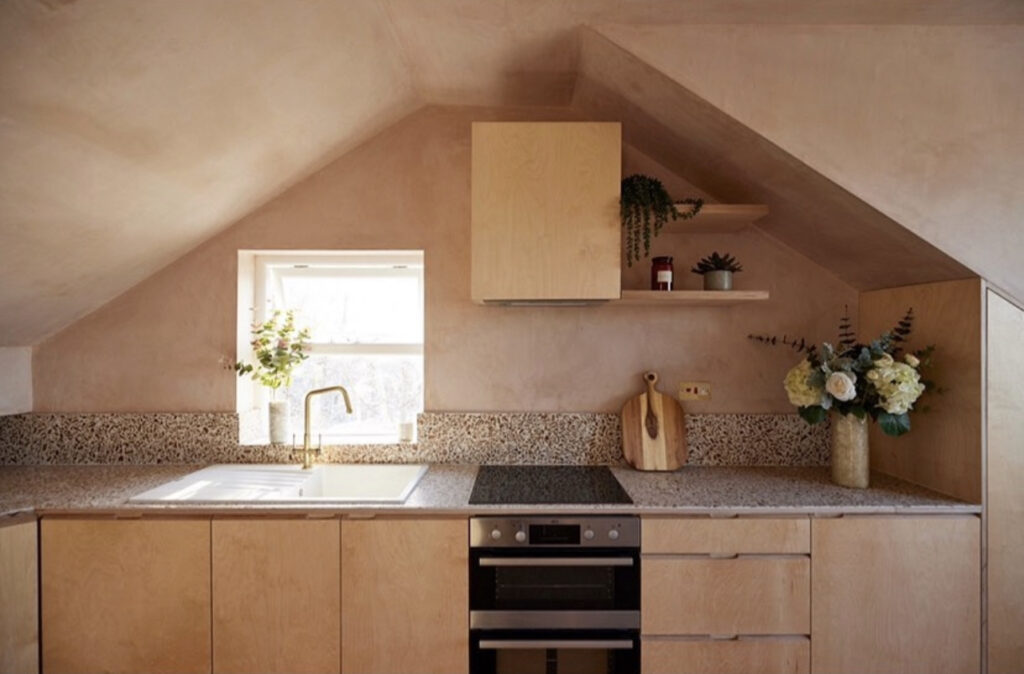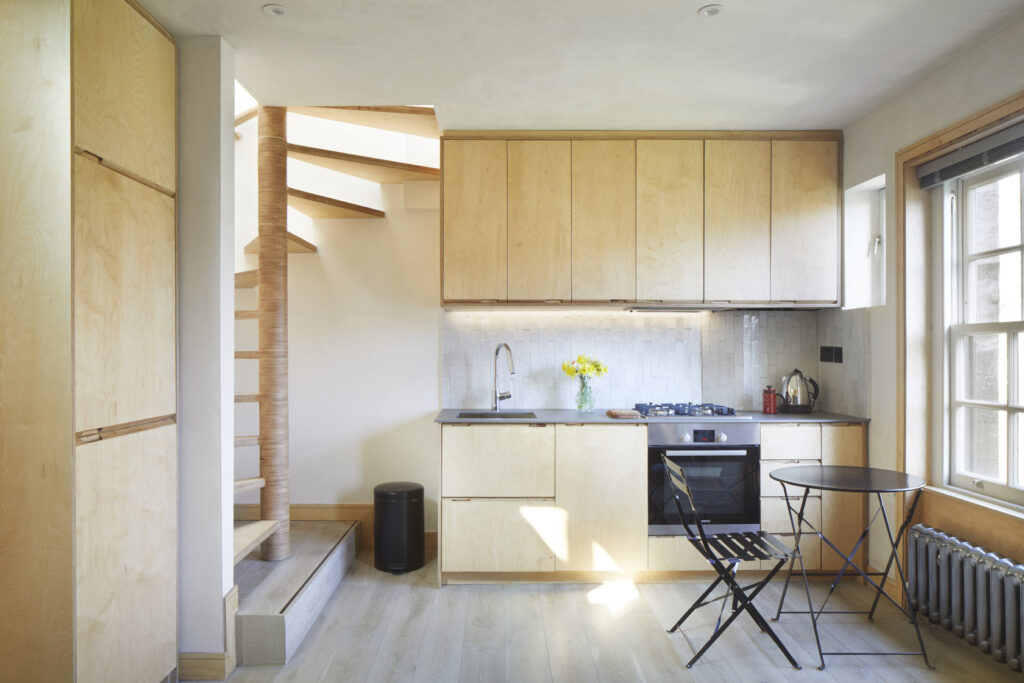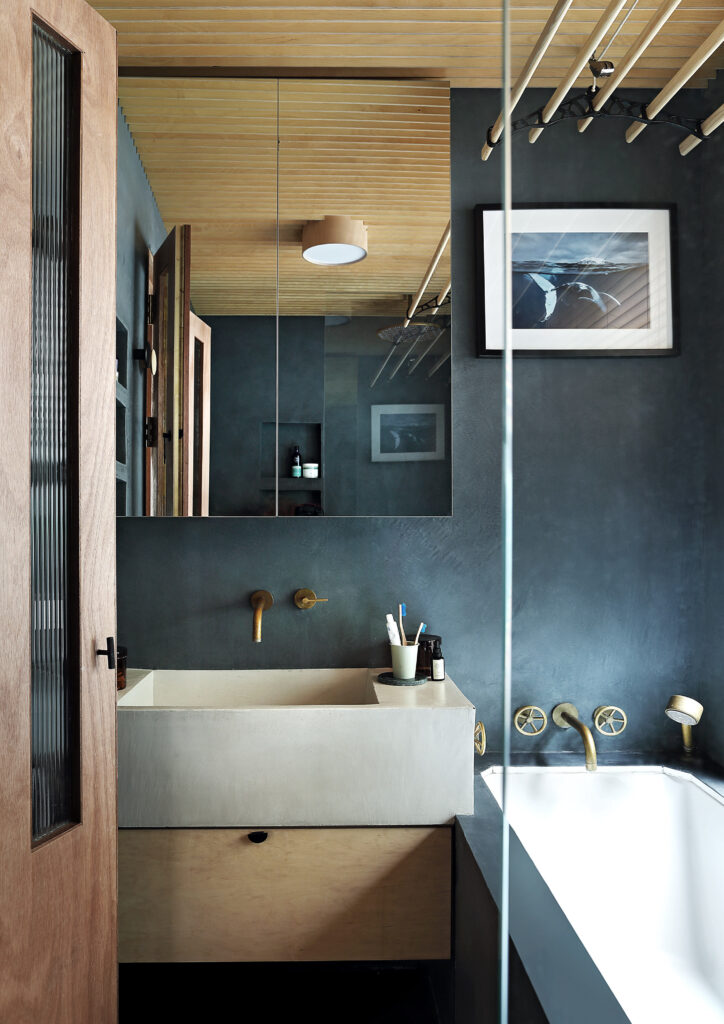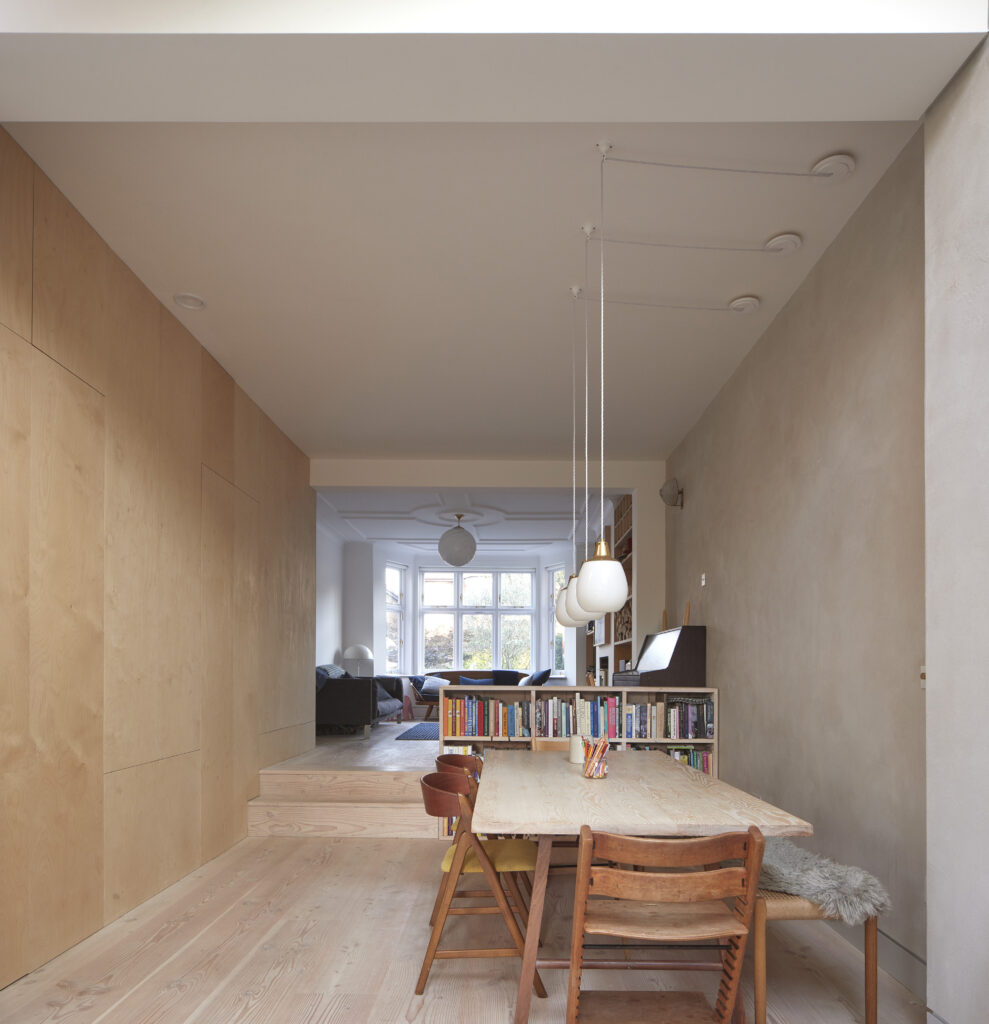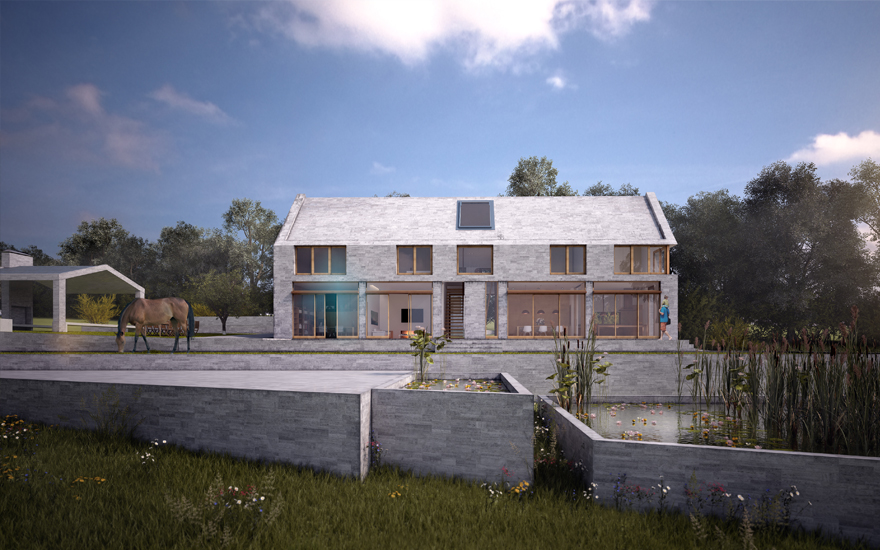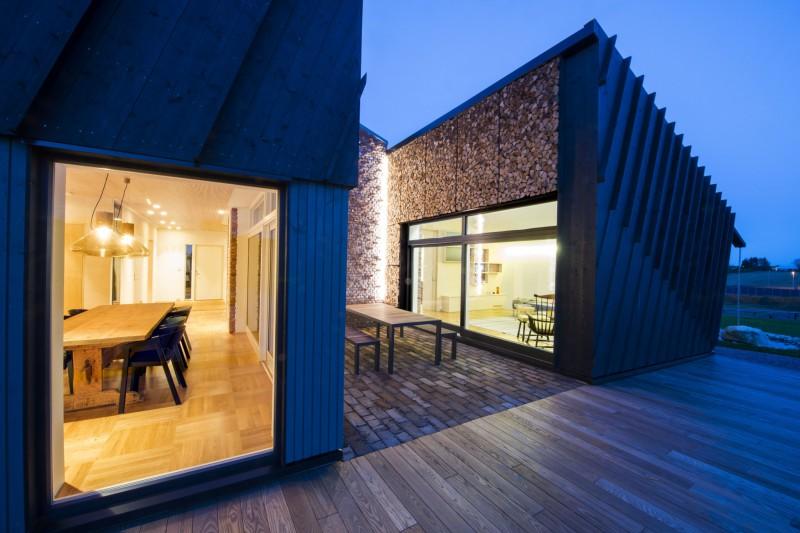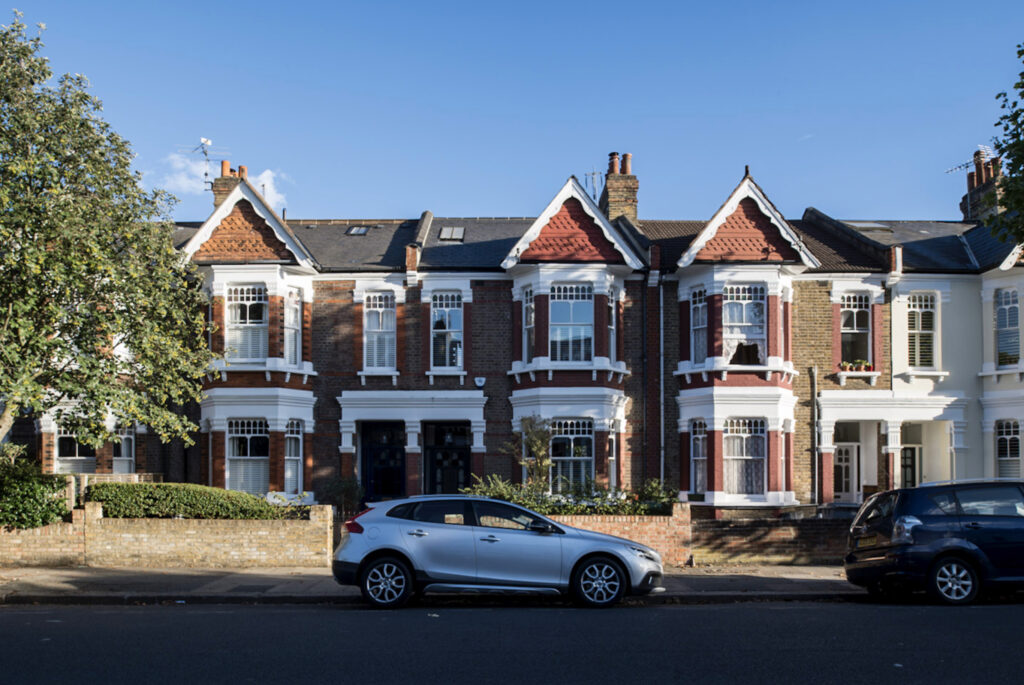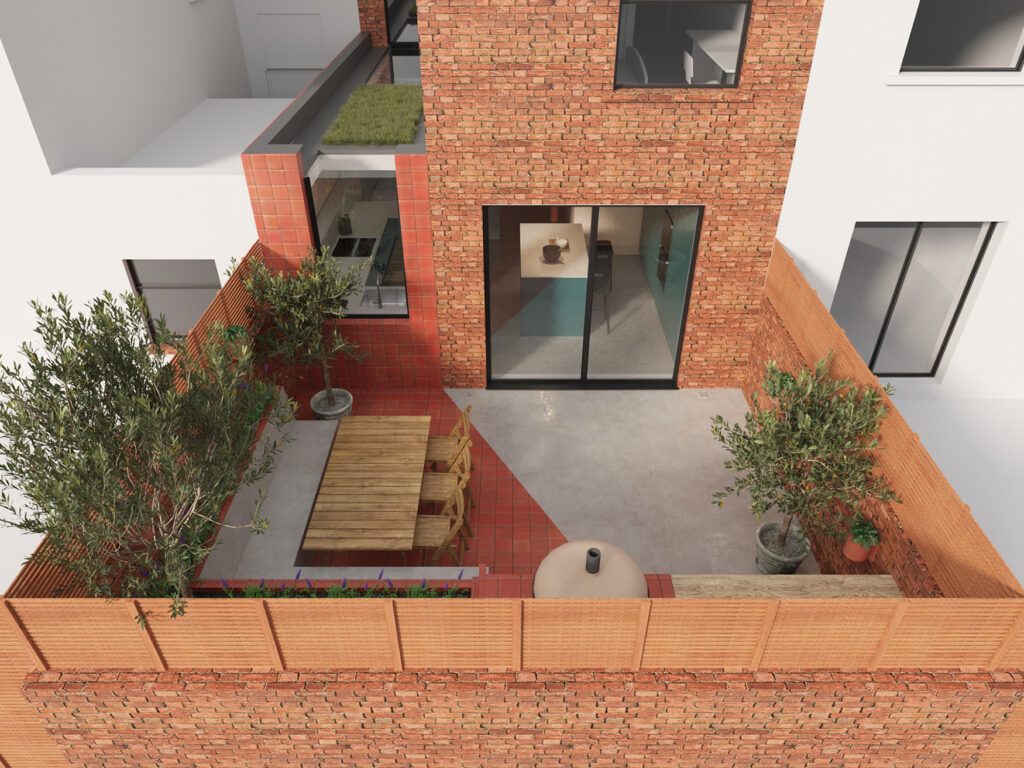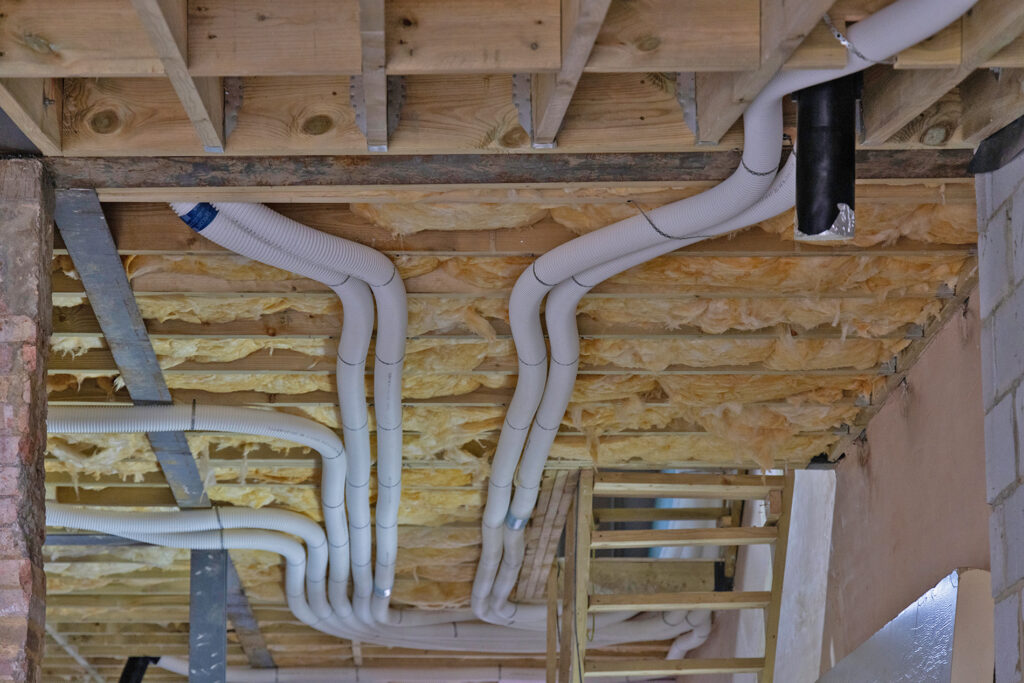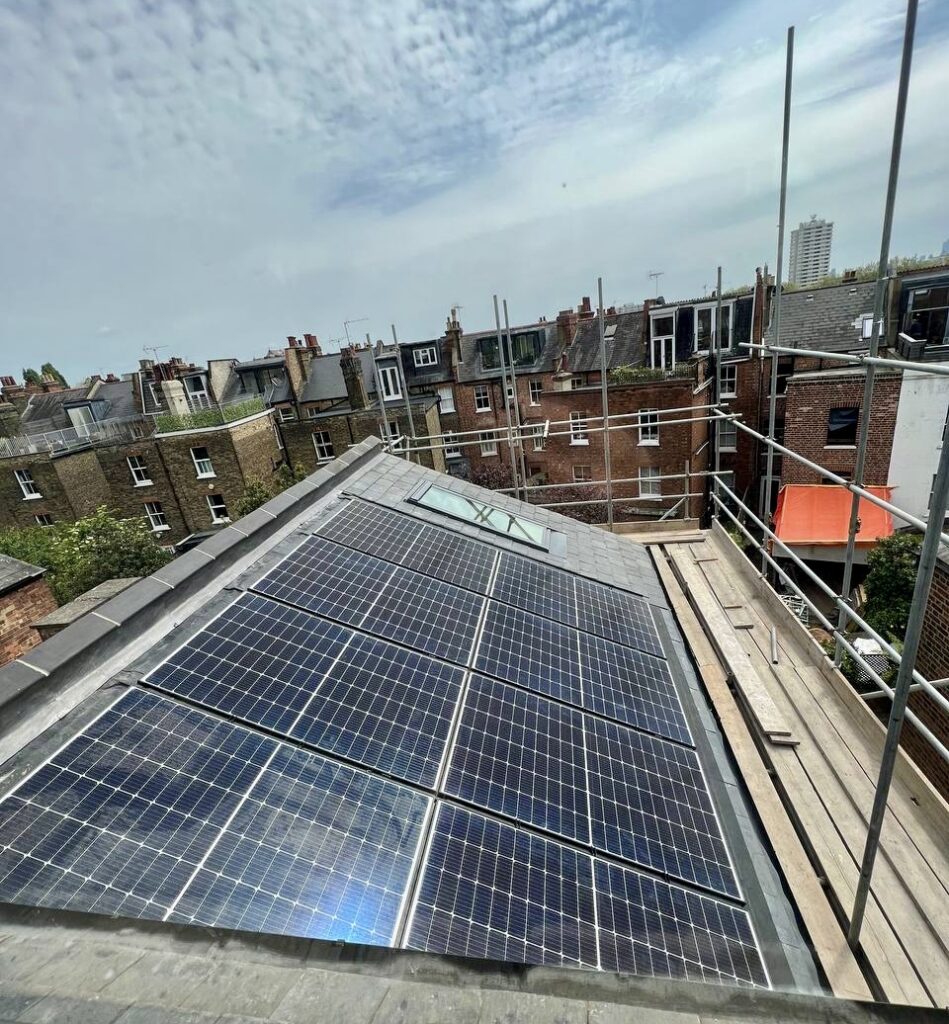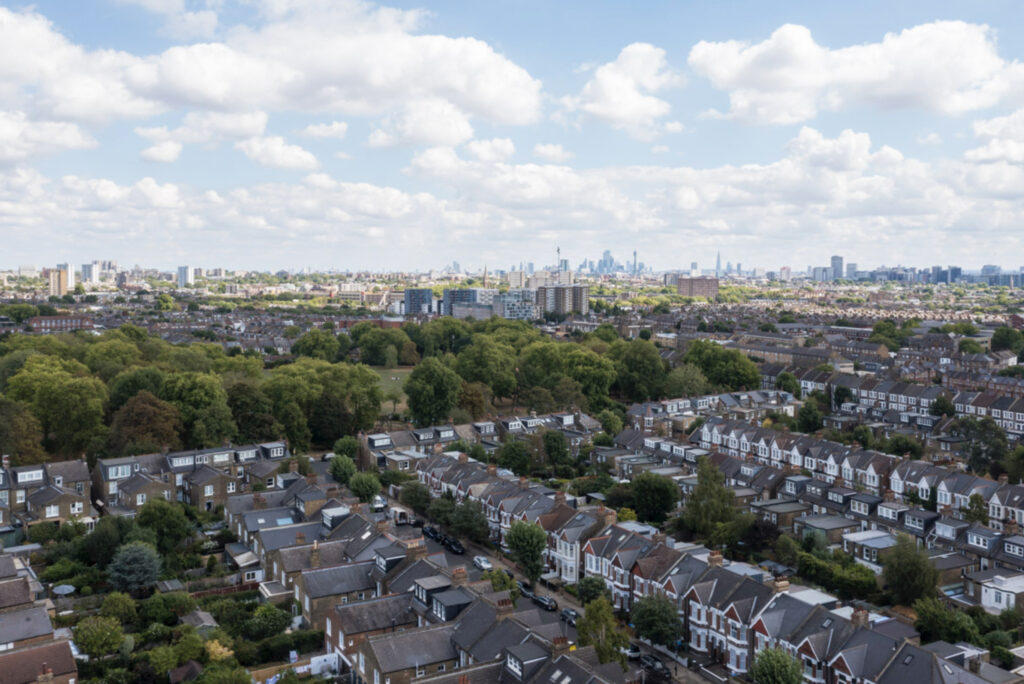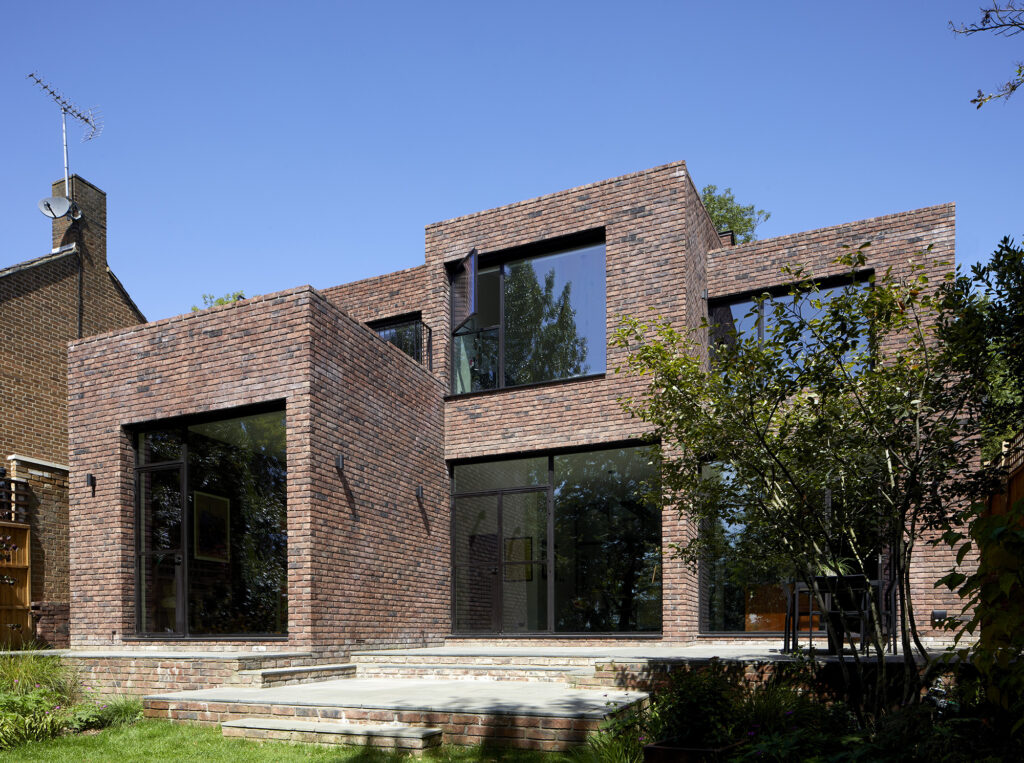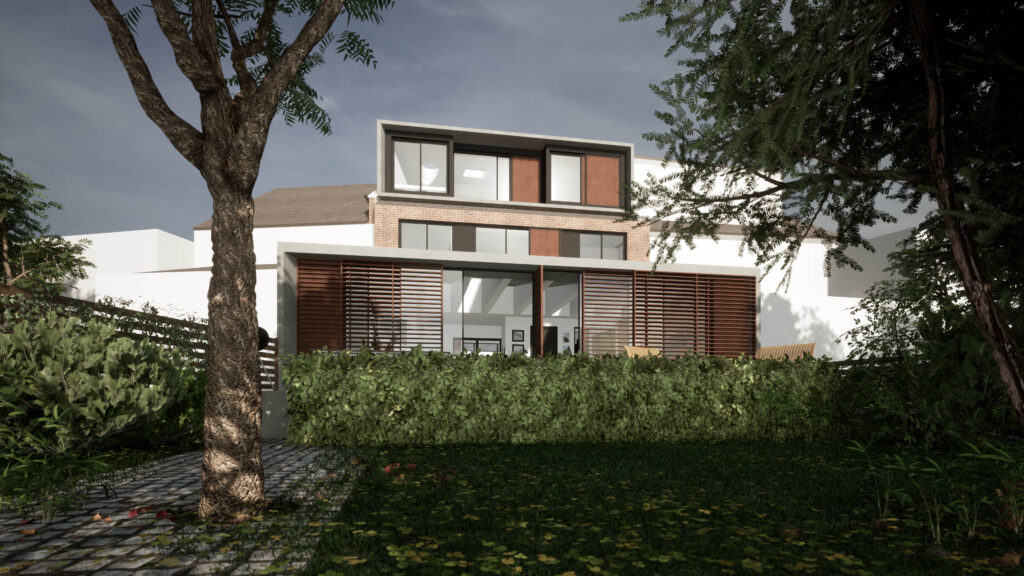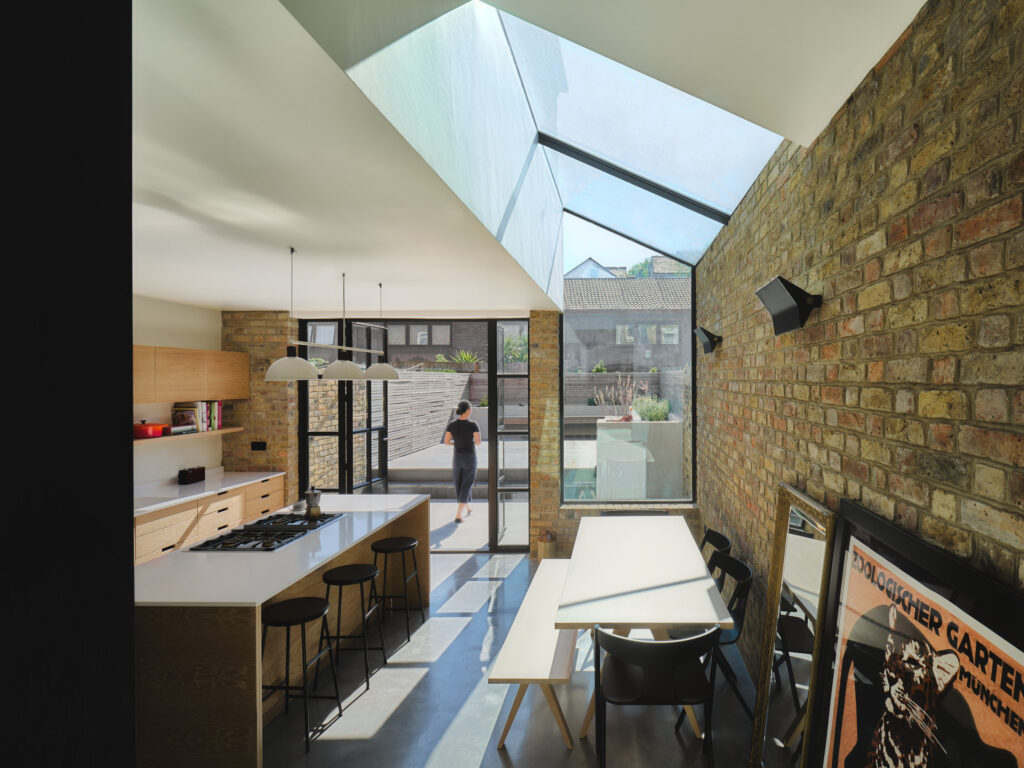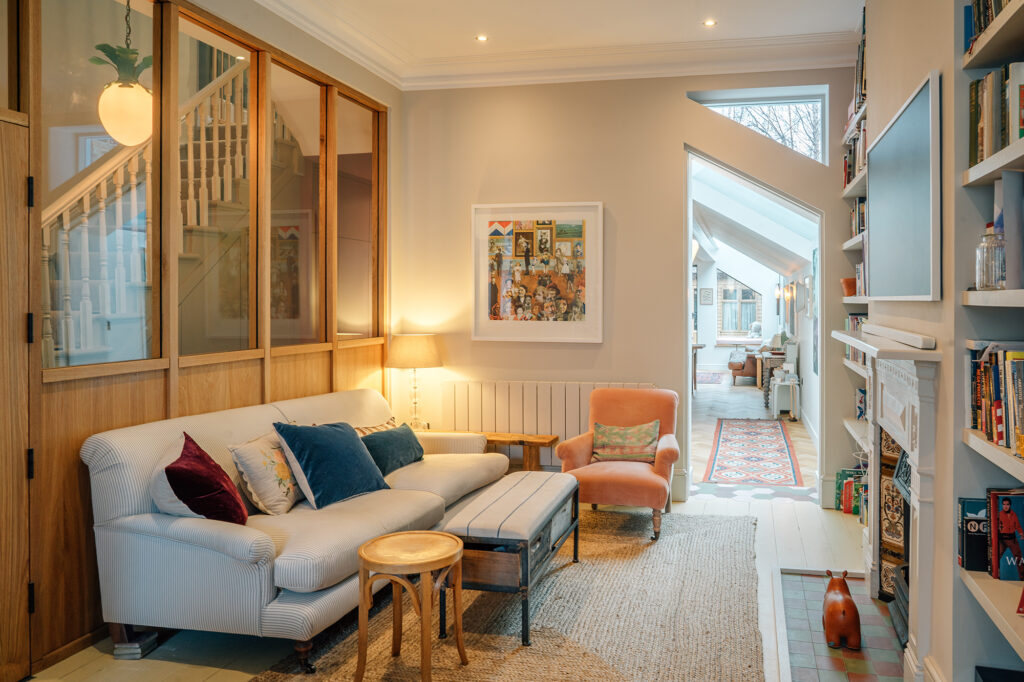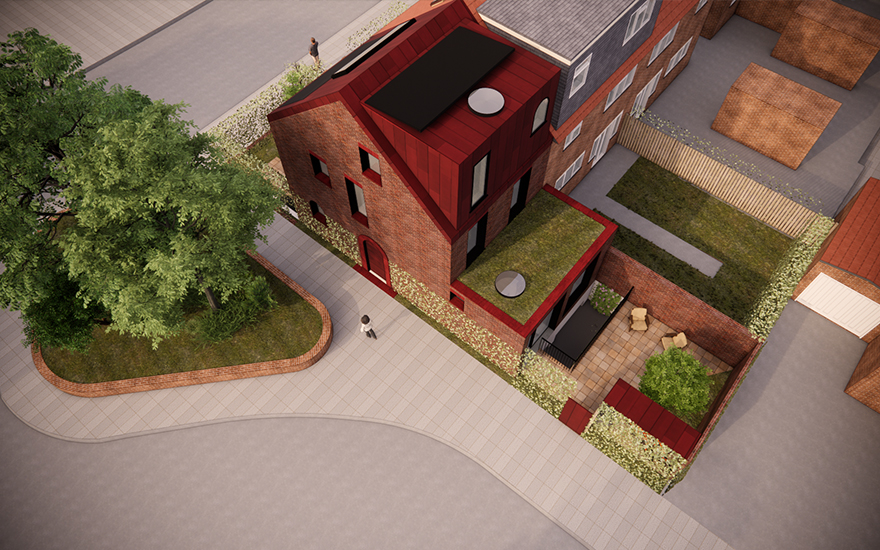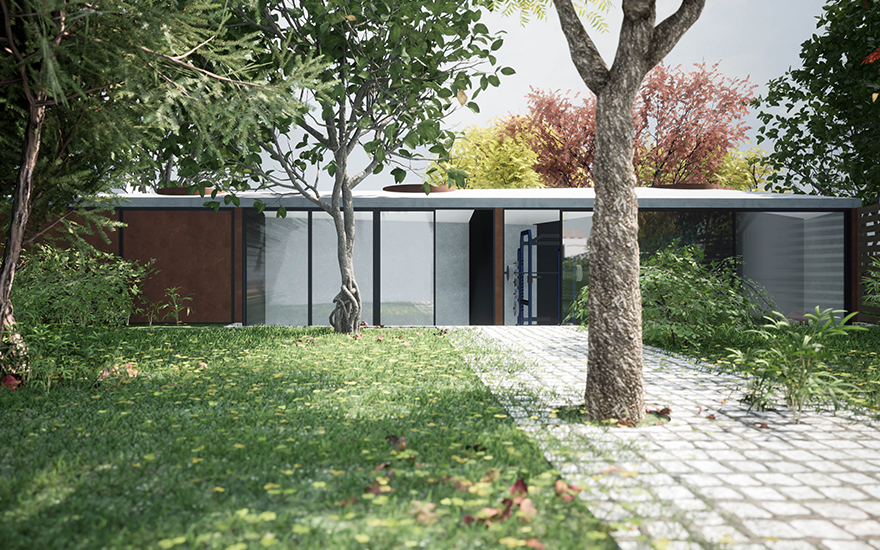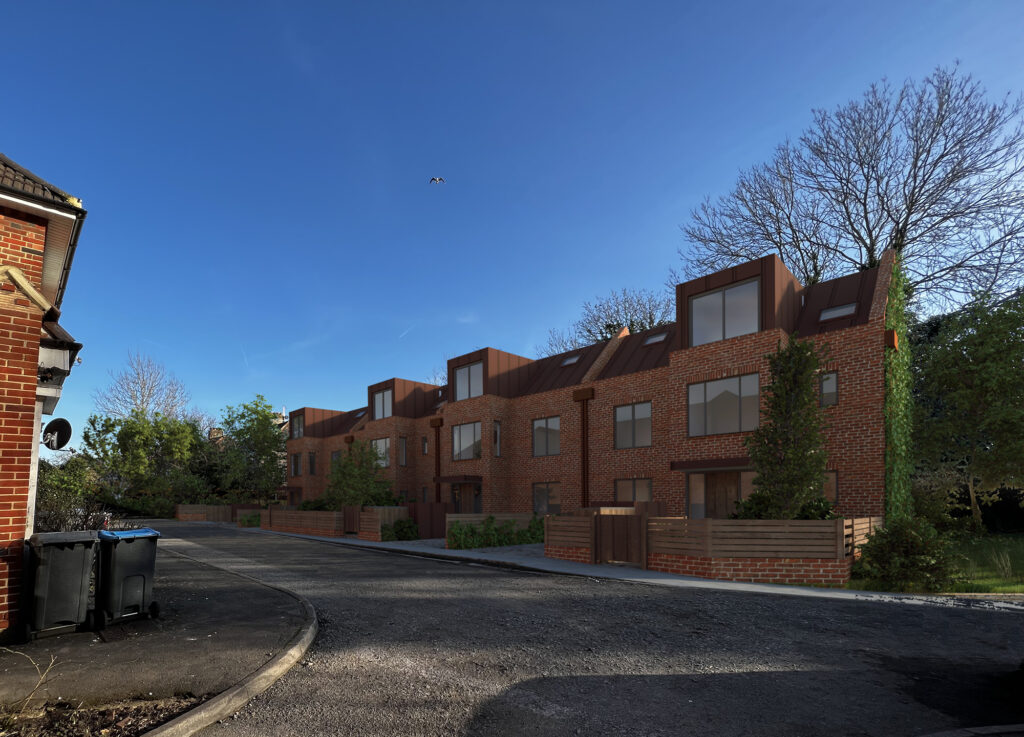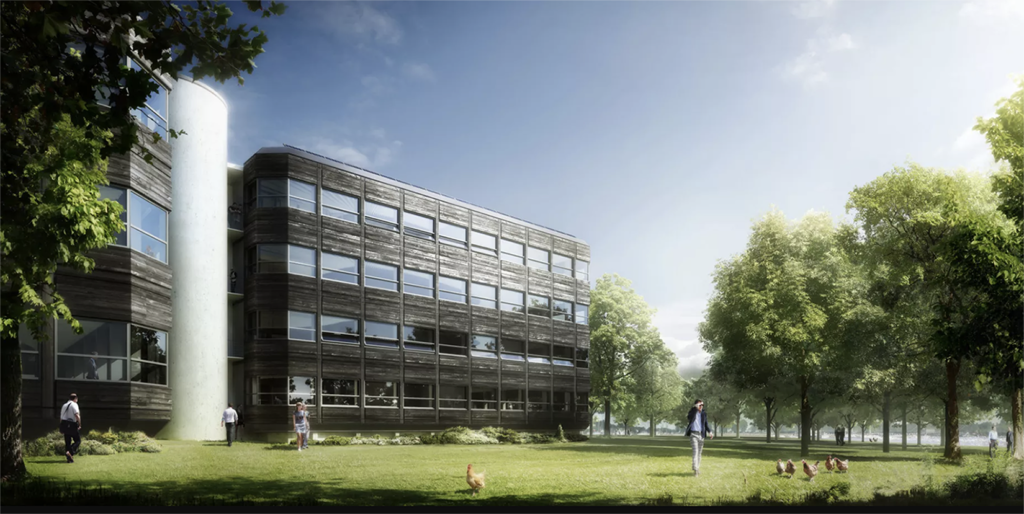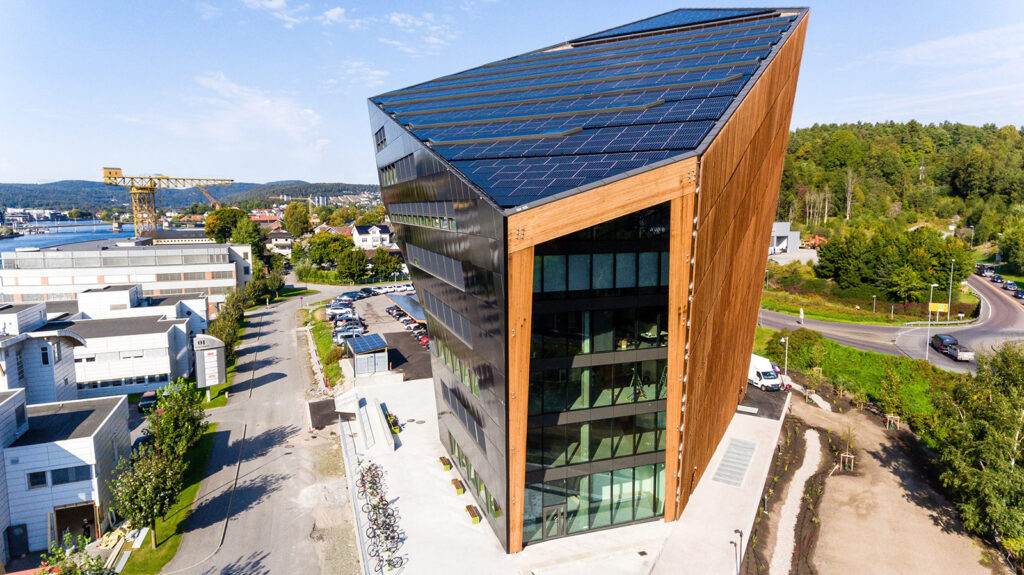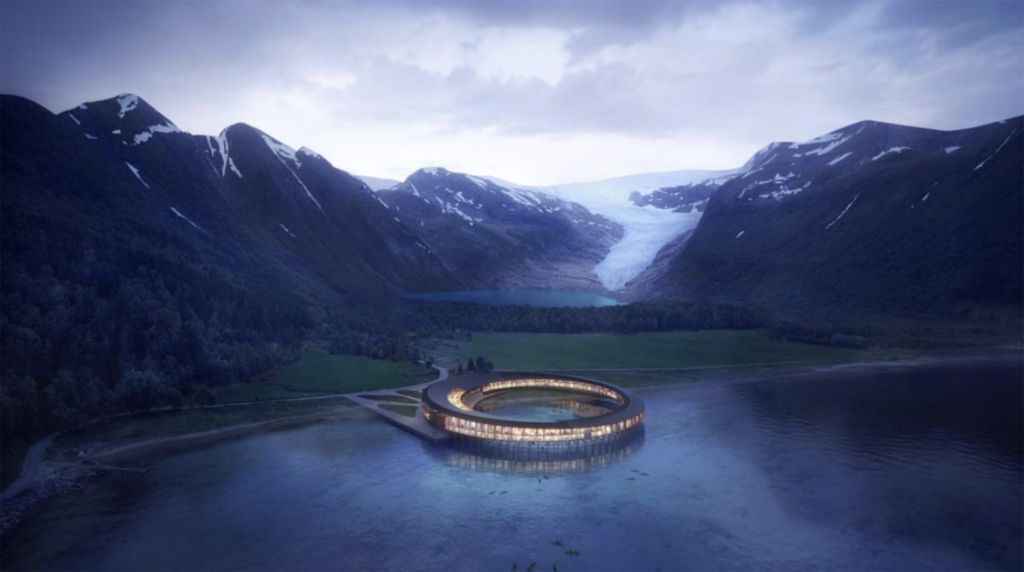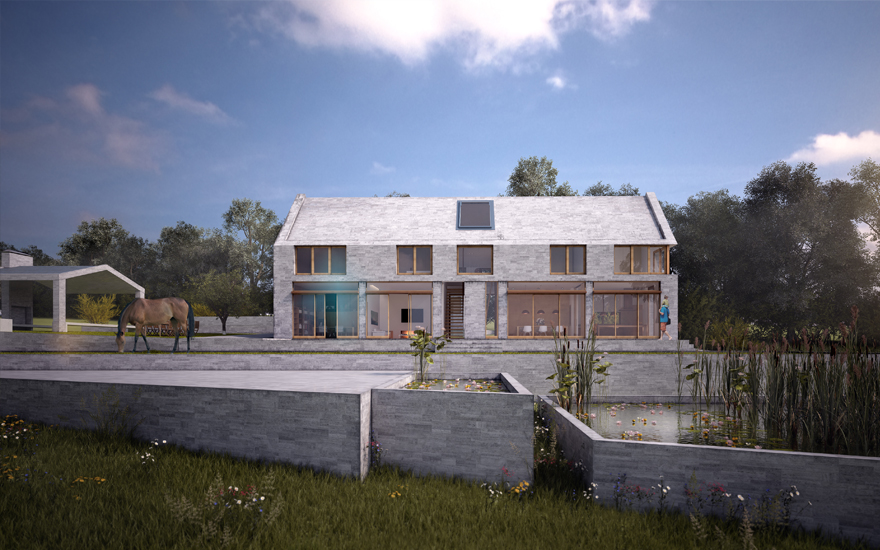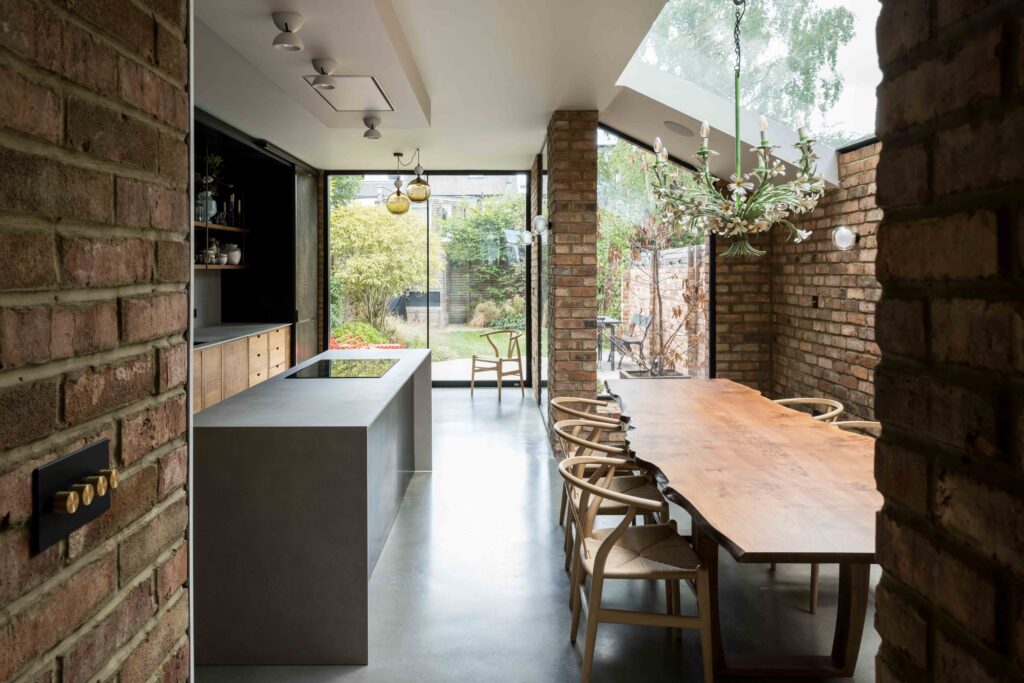As we work alongside the UK’s net-zero carbon mission, one technology has emerged as instrumental – the heat pump. Yet, misconceptions surround it, impeding its adoption. In this guide, we’ll address and debunk 20 prevailing myths.
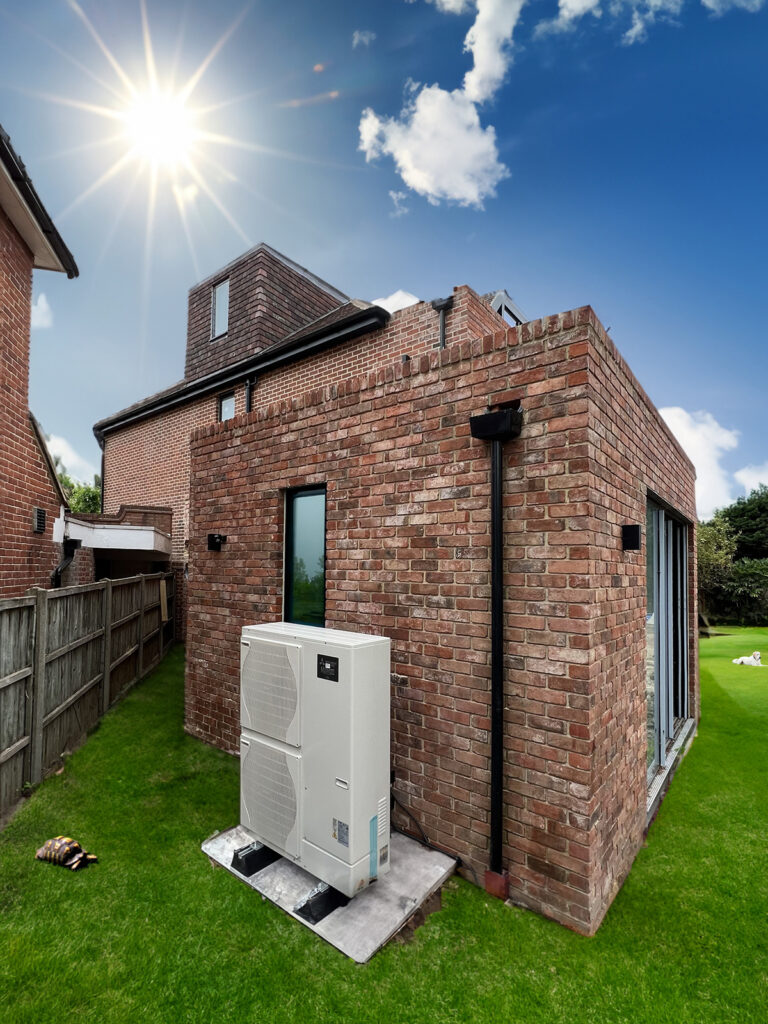
Chapter 1: Introducing Heat Pumps – A Brief Historical Insight:
Heat pumps, while often perceived as a modern marvel, have a long history that dates back over a century and a half. The inception of this revolutionary technology can be traced back to 1856 when the first recognisable iteration of a heat pump was designed and built by Peter von Rittinger. This early model laid the foundation for what would become an integral component of energy-efficient heating and cooling in homes and businesses worldwide.
The journey of the heat pump wasn’t instantaneous. Like many pioneering innovations, its early stages involved rigorous research, trial, and occasional error. Over the subsequent decades, the technology underwent refinement and adaptation, evolving with the needs of society and advancements in engineering. By the early 20th century, heat pumps began to exhibit characteristics similar to the ones we’re familiar with today.
Their relevance in the UK’s architectural and domestic landscape came into prominence during the mid to late 20th century. With the nation’s growing emphasis on energy efficiency, sustainability, and the desire to reduce dependency on traditional fossil fuels, heat pumps were identified as a sustainable solution that combined both heating and cooling functionalities. They soon began to grace homes across the UK, from urban apartments in bustling cities to quaint cottages in the picturesque countryside.
In the decades that followed, their popularity surged, especially with increasing awareness about climate change and the need for sustainable living solutions. The UK’s commitment to reducing carbon emissions further bolstered the appeal of heat pumps, as homeowners and businesses have sought ways to minimise their carbon footprint without compromising on comfort.
Furthermore, as energy prices fluctuated and concerns grew over the long-term availability of non-renewable energy sources, heat pumps stood out as a cost-effective and reliable alternative. Their dual functionality, offering both heating in the chilly winter months and cooling during the warm summers, should further cement their position as a favourite choice among Britons.
In retrospect, while the heat pump’s journey began in 1856, its relevance has never been more pertinent. Today, as we stand on the precipice of an environmental revolution, heat pumps represent not just a nod to our innovative past, but a beacon of hope for a sustainable future.
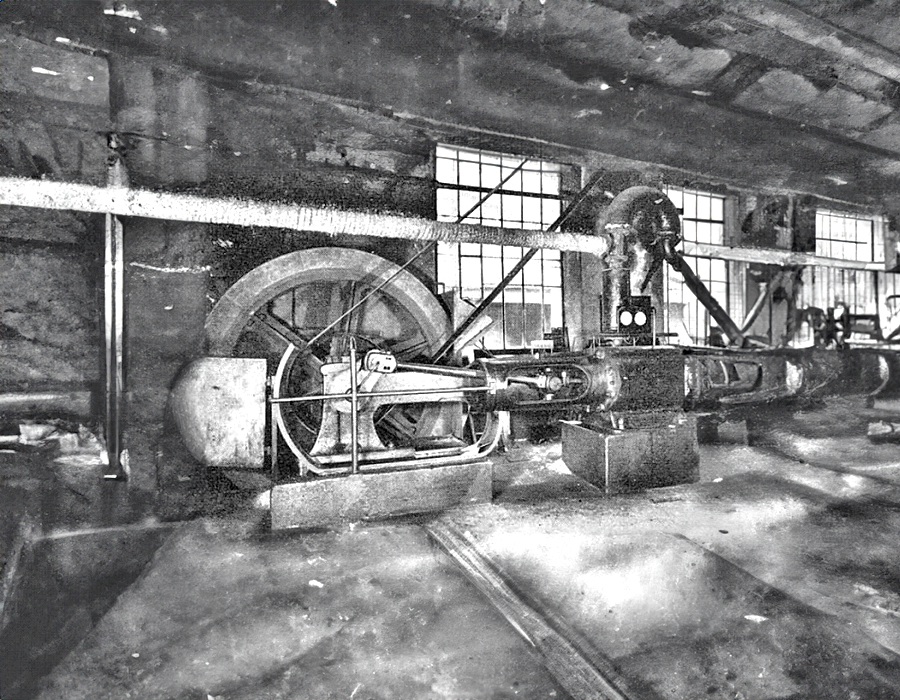
Chapter 2: The Cold Climate Conundrum: Debunking Common Misconceptions
The perception surrounding heat pumps has been paradoxical. While they are lauded for their energy efficiency and environmental credentials, a lingering scepticism exists about their efficacy in colder climates. Many harbour the belief that as temperatures drop, heat pumps become less efficient, or worse, completely inoperative. This chapter delves into the cold climate conundrum, dissecting myths and illuminating the truth with empirical evidence.
Firstly, it is essential to understand the fundamental working principle of a heat pump. These devices function by extracting latent heat from the outside air, even when it’s cold, and then transferring this heat indoors. This is not so different from the way our refrigerators work but in reverse. Even in colder temperatures, there is always some heat present in the air; heat pumps are adept at harnessing it.
The naysayers, perhaps, have not cast their eyes far and wide. For if they did, they would see countries with colder climates not just using, but thriving with heat pump technology. Let’s delve into some of these countries:
- Norway: Often, the land of fjords and Northern lights see extended cold spells, with temperatures frequently plunging below freezing. Yet, many Norwegian homes are fitted with heat pumps (with 1.5 million units, it has 604 heat pumps installed for every 1,000 households). Their government, aware of the environmental and economic benefits, actively promotes their use. In fact, Norway stands as a testament to how a country can leverage modern technology to remain warm and sustainable simultaneously.
- Canada: A vast nation, Canada is no stranger to biting cold. With its expansive terrains and diverse climate zones, you’ll find regions where winters are harsh and prolonged. Yet, Canadian homeowners and businesses have found a friend in heat pumps. Many regions have witnessed a growing adoption of this technology, with users attesting to their effectiveness even during the coldest months.
- Switzerland: Nestled amidst the Alps, Switzerland experiences frigid winters. The Swiss, known for their precision and love for efficiency, have adopted heat pumps in both residential and commercial settings. From modern apartments in Zurich to cosy chalets in Zermatt, the technology has found its place, ensuring warm interiors against the chilly alpine backdrop.
It’s worth noting that modern heat pumps have evolved to be even more efficient in cold climates. Technological advancements have led to the development of models specifically designed for colder regions, ensuring they function optimally even when the mercury drops.
In conclusion, the cold climate conundrum is more a myth than a reality. Countries with some of the most challenging winter conditions have demonstrated that heat pumps can be, and indeed are, a reliable and efficient heating solution. It’s high time we shed our misconceptions and embrace the warmth that heat pumps promise, regardless of the chill outside.
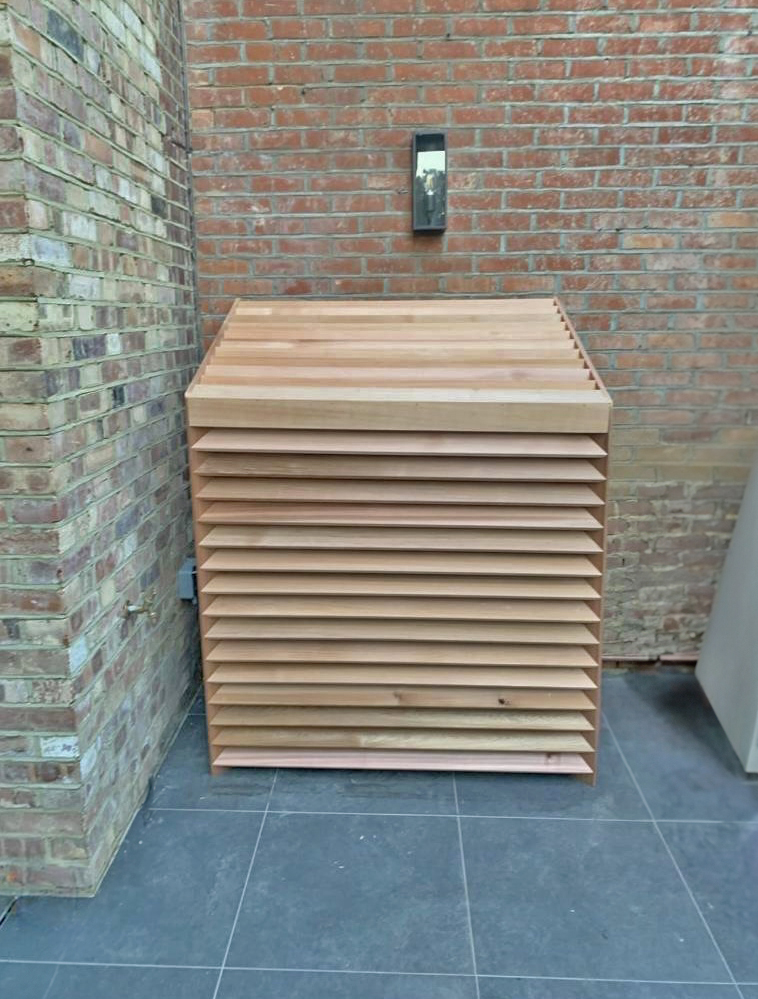
Chapter 3: Do Heat Pumps Always Need a Backup? Understanding the Realities Beyond Common Perceptions:
When we think of new technology, especially one that challenges conventional methods, it’s natural for apprehensions to arise. One such apprehension surrounding heat pumps is the question of their standalone capability. A frequently posed query is: “Do they always need a backup heating system?” This chapter aims to dissect this assumption and shed light on the realities.
At the heart of this misconception is the inherent human desire for a safety net. Traditional heating systems have set patterns, with many homes having secondary heating options in place. With the advent of heat pumps, this pattern came under scrutiny. Can a single system, especially one dependent on extracting heat from the external environment, be sufficient on its own?
The answer, as empirical evidence suggests, is a resounding ‘yes’. However, like all things, this doesn’t apply universally, but in a significant number of cases.
Let’s delve deeper into the UK’s electrification of heating trial:
- Context of the Trials: These trials were meticulously planned and executed across a diverse set of homes. From urban apartments to suburban houses and rural cottages, the trials spanned an array of building types and ages. Their purpose was to gauge the efficiency of heat pumps in varying conditions and scenarios.
- Findings and Outcomes: An astounding 79% of homes in these trials found heat pumps to be sufficiently effective on their own. This means that in nearly 8 out of 10 homes, there was no need for any additional backup heating system, a testament to the robustness and efficiency of modern heat pump technology.
- Factors Impacting the Results: It’s worth noting that while 79% is an impressive figure, there are homes where backup systems might be deemed necessary. Factors like the specific location of a house, its insulation quality, and individual heating needs can play a role. For instance, homes in extremely cold pockets or those with specific architectural challenges might benefit from an auxiliary heating system. However, these remain exceptions rather than the rule.
Moreover, advancements in heat pump technology have consistently improved their adaptability and performance. Today’s models are more resilient, capable of functioning optimally across a wider range of temperatures, and more adaptable to the specific needs of individual homes.
In conclusion, the notion that heat pumps invariably require backup is more myth than fact. While there might be specific scenarios where auxiliary heating is beneficial, a significant majority of homes can rely on heat pumps as their primary, and often sole, heating system. The findings from the UK trials offer not just data but a compelling narrative for homeowners to trust in the capability of heat pumps.

Chapter 4: Ageing Buildings and Heat Pumps: Debunking the Myth of Inefficiency
The charm of older buildings, with their ornate designs and historical significance, often comes with its own set of challenges, especially when modernising their interiors or systems. As the push for energy efficiency grows stronger, homeowners of older properties often find themselves grappling with decisions about retrofitting. One of the debates that invariably arises is the feasibility of integrating modern heating systems, like heat pumps, into aged structures.
There’s a prevalent belief that older buildings, with their thicker solid walls and outdated construction materials, may not be suitable candidates for modern heating systems. The assumption is straightforward: Older homes weren’t built with contemporary technology in mind, so they might not be compatible. However, is this assumption rooted in fact?
- Personal Experience – The Victorian Era Home: As an architecture practice focussing on low-energy designs, we’ve advised many homeowners on the benefits of using a Heat Pump in the modernisation of their Victorian homes. In all cases where we’ve installed a Heat Pump in a Victorian property, the clients have reported that their homes are consistently warm, the efficiency of the heat pump remains uncompromised.
- Studies and Research: My personal experience isn’t an isolated case. Numerous studies have delved into the performance of heat pumps in older constructions. One noteworthy study by the Fraunhofer Institute in Germany evaluated the efficiency of heat pumps in a range of buildings, from pre-war structures to modern homes. The findings were clear: The age of the building had negligible impact on the heat pump’s performance.
- The Science Behind the Compatibility: So why do heat pumps work well in older homes? The answer lies in the basic operational principles of heat pumps. These devices extract ambient heat and intensify it to warm interiors. They don’t rely on the structural attributes of a building. Hence, whether a home has thick stone walls or modern insulation, the heat pump operates on the same principle.
- Factors to Consider: While heat pumps are generally effective in older homes, certain considerations can optimise their performance. For instance, while the age of the building doesn’t significantly affect the heat pump’s efficiency, proper insulation can enhance the overall energy efficiency of the home. Similarly, factors such as the size and placement of the heat pump, and the specific heating requirements based on the building’s size and layout, should be taken into account.
To sum up, the notion that ageing or historically significant buildings aren’t suited for modern heating technologies like heat pumps is a myth. With proper planning and installation, heat pumps can bring modern-day energy efficiency to structures from any era, ensuring that these architectural beauties remain both comfortable and sustainable for future generations.
Chapter 5: Disentangling Insulation from Heat Pump Efficiency: Busting the Insulation Prerequisite Myth
The nexus between insulation and heating systems is well-documented. Insulation plays a pivotal role in maintaining internal temperatures, reducing energy consumption, and consequently, reducing utility bills. However, when it comes to heat pumps, a misconception has burgeoned, suggesting that these devices are intrinsically reliant on high levels of insulation to function efficiently. Let’s delve deeper into this issue and unravel the truth.
- Understanding the Basics: At their core, heat pumps operate by extracting ambient heat from the outside and amplifying it to heat the interiors. Their performance isn’t strictly tethered to the insulation properties of the building. Thus, even in less-insulated structures, heat pumps can generate and supply heat efficiently.
- The Role of Insulation: While heat pumps can operate in less-insulated buildings, it’s essential to recognise the broader role of insulation. Good insulation helps maintain the heat generated, reducing the amount of work the heat pump has to do and consequently, its energy consumption. In a well-insulated home, the heat remains trapped indoors, and the heat pump doesn’t have to operate as frequently or as long to maintain desired temperatures.
- Comparing Costs: One of the immediate repercussions of having a heat pump in a less-insulated home is the potential increase in energy consumption. Though the heat pump will work effectively, the heat it generates may escape more quickly in poorly insulated buildings. This means the pump will have to work harder and longer, possibly leading to higher energy bills. However, this cost implication stems from the lack of insulation rather than a deficiency in the heat pump’s performance.
- Recommendations for Optimal Performance: While high insulation isn’t a strict prerequisite for heat pump operation, it is recommended for optimal energy efficiency. Homeowners aiming to get the most out of their heat pumps, both in terms of comfort and economy, should consider enhancing insulation. This can be achieved through methods like cavity wall insulation, internal or external wall insulation, loft insulation, and double or triple glazing, to name a few.
- Case Studies and Real-world Scenarios: Various studies and real-world applications further dismantle the myth. For instance, there have been numerous installations in older homes, some with minimal insulation, where heat pumps have functioned commendably, maintaining warmth even in colder seasons.
In conclusion, while insulation undeniably plays a vital role in energy conservation and optimising heating efficiency, it’s not an absolute must-have for heat pumps to function effectively. Homeowners should view insulation as a complement to heat pump installations, enhancing the overall energy efficiency of their homes, rather than seeing it as an obligatory precursor. The key is understanding the balance and making informed decisions based on both immediate needs and long-term benefits.
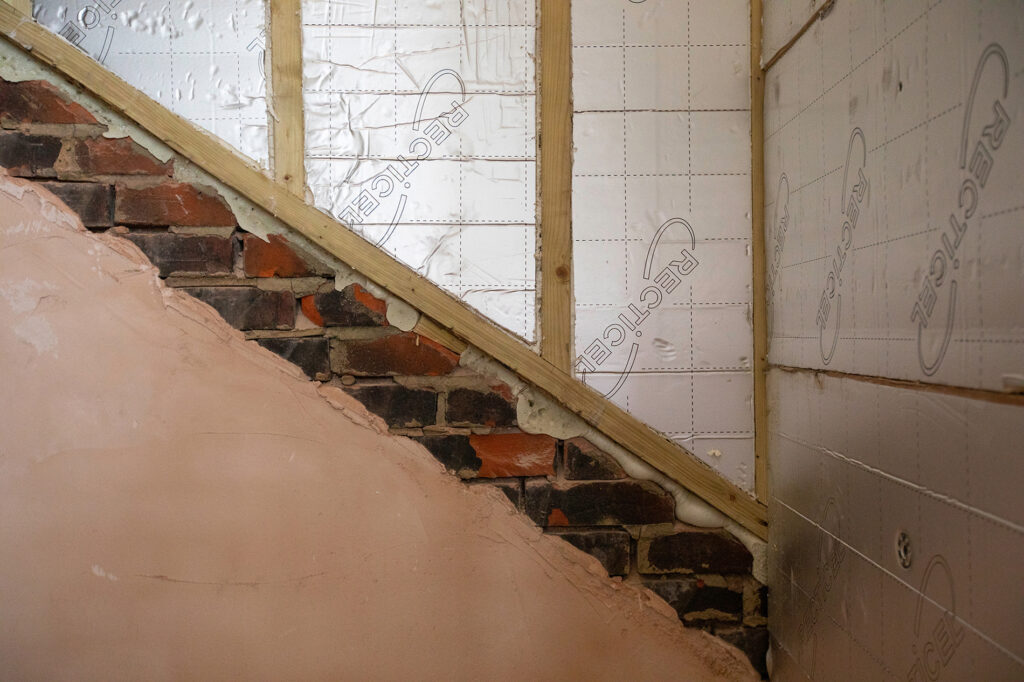
Chapter 6: Heat Pump and Underfloor Heating – A Mere Association: Unravelling the Radiator Compatibility
The synergy between heat pumps and underfloor heating has been so frequently extolled that many homeowners have come to believe that heat pumps are exclusively tailored for underfloor heating systems. This perspective, however, does not capture the full versatility and adaptability of heat pumps. In this chapter, we’ll dispel the myth that confines heat pumps to underfloor heating and explore their compatibility with traditional radiators.
- Origins of the Myth: The association between heat pumps and underfloor heating primarily stems from their efficient partnership. Underfloor heating systems typically operate at lower temperatures compared to conventional radiators, which dovetails perfectly with the heat delivery of heat pumps. However, this harmonious pairing shouldn’t be mistaken for exclusivity.
- Heat Pumps and Radiators: Modern heat pumps are designed to cater to a variety of heating systems, including traditional radiators. While it’s true that some older radiators may not be optimised for the lower flow temperatures typically provided by heat pumps, many contemporary radiators are designed or can be adapted to work efficiently with them.
- Benefits of the Pairing: When paired with radiators tailored for lower temperatures, heat pumps can offer a highly efficient heating solution, providing uniform warmth and reducing energy consumption. Plus, for homeowners looking to transition to a more sustainable heating solution without completely overhauling their existing infrastructure, integrating a heat pump with existing radiators can be an optimal solution.
- Considerations for Homeowners: For those considering this route, it may be beneficial to consult with a heating specialist. In some instances, upsizing radiators can compensate for the lower flow temperatures, ensuring that homes remain as warm as they would with a conventional boiler system.
- The Broader Picture: The adaptability of heat pumps goes beyond just radiators and underfloor heating. They can be integrated with fan coil units, air handling units, and even domestic hot water systems. This versatility underscores the fact that heat pumps can be tailored to suit various heating needs and infrastructures.
- Real-world Applications: Many homes in the UK and across Europe have successfully paired heat pumps with radiators. These practical applications highlight not only the feasibility of such pairings but also their efficiency, providing homeowners with comfortable living environments even during colder months.
In conclusion, the association between heat pumps and underfloor heating, while based on genuine efficiency benefits, has overshadowed the broader versatility of heat pumps. Homeowners and developers shouldn’t feel constrained by this myth. With the right guidance and perhaps some minor modifications, heat pumps can be seamlessly integrated with radiators, offering a sustainable, efficient, and versatile heating solution for various building types and needs.
Chapter 7: Ensuring Warmth and Comfort: The Heartwarming Truth About Heat Pumps
When evaluating the myriad of heating solutions available on the market, the foremost concern for many homeowners remains consistent: Will this keep my home warm and comfortable, particularly during the bitter chill of winter? For heat pumps, there exists a lingering scepticism about their ability to deliver on this basic yet crucial promise. In this chapter, we’ll explore the real-world performance of heat pumps, diving into their capability to provide consistent warmth and the increased comfort experienced by numerous households.
- Origin of the Myth: The doubt regarding the ability of heat pumps to provide adequate warmth often stems from a fundamental misunderstanding of how they operate. Unlike traditional boilers which generate heat, heat pumps transfer heat from one source to another, leading some to question their efficiency in colder conditions.
- How Heat Pumps Work: A basic grasp of the mechanics can dispel many myths. Heat pumps extract heat from external sources – be it air, ground, or water. Even in colder temperatures, there’s still ambient heat available, which the heat pump can capture, amplify, and transfer indoors.
- Consistent Warmth: One of the standout features of heat pumps is their ability to deliver a steady and consistent temperature. Instead of the peaks and troughs of warmth commonly associated with traditional heating systems, heat pumps maintain a more even temperature, which many find to be a more comfortable living environment.
- User Testimonials: A growing number of UK households are singing the praises of heat pumps. Not only do they report homes that are adequately warm, but many also note an improvement in overall comfort levels, attributed to the consistent temperature and improved air quality often associated with heat pump systems.
- Efficiency in Design: Advances in heat pump technology, combined with proper installation, ensure they operate at peak efficiency. This means they can draw as much heat as possible from their source, even in colder conditions, guaranteeing a warm and cosy interior.
- The Broader Benefits: Beyond just heating, many modern heat pumps also offer ventilation and filtration features. This not only aids in maintaining a comfortable temperature but also ensures a healthier indoor air environment, free from pollutants and allergens.
- Case Studies: Various comparative studies, especially those in colder regions of the UK, have shown homes with heat pumps to be as warm, if not warmer, than those with conventional heating systems. This empirical evidence firmly dispels the myth of inefficacy.
In summation, the proof of the warmth and comfort provided by heat pumps is not just in the technical specifications or lab results, but in the lived experiences of countless homeowners. As more people transition to this sustainable heating solution, the narrative is clear: heat pumps don’t just promise warmth; they deliver it, ensuring homes are havens of comfort regardless of the season.

Chapter 8: Debunking Noise Concerns: The Silent Strength of Modern Heat Pumps
A quiet, unobtrusive operation is a coveted feature for many household appliances, and this is particularly true for heating systems that run frequently. There’s a lingering perception about heat pumps being noisy contraptions, often deterring potential users. This chapter aims to put those concerns to bed by examining the noise levels of contemporary heat pumps and their silent evolution over time.
- Understanding the Source of the Myth: Historically, earlier generations of heat pumps, particularly some air source types, did generate a noticeable hum during operation. However, equating those older models with today’s advanced units would be akin to comparing an old motorcar’s noise levels to that of a modern electric car.
- Ground Source Heat Pumps – Silent Underground Workers: Among the quietest in the family, ground source heat pumps harness the earth’s stable temperature. The majority of their components, including the noisy ones, are buried underground, thus significantly dampening any operational sounds.
- Air Source Heat Pump Advancements: While air source heat pumps might be more audible than their ground source counterparts, significant strides in design and technology have made them quieter than ever. Enhanced fan designs, sound-dampening materials, and vibration-reducing mounts ensure that any noise remains largely imperceptible.
- Noise in Perspective: To give context, the noise level of a modern heat pump is often compared to a refrigerator’s gentle hum. When placed strategically and following best installation practices, any sound produced rarely intrudes upon daily life.
- Regulations and Standards: Recognising noise as a potential concern, manufacturers and regulators have collaborated on stringent standards. Many countries, including the UK, have set decibel limits for outdoor units to ensure residential peace and tranquillity.
- Choosing the Right Location: A significant factor in noise perception is the location of the heat pump installation. By positioning the unit away from bedrooms and regularly occupied spaces and ensuring it’s on a stable, vibration-reducing base, the noise factor can be further minimised.
- Listening to User Feedback: A growing number of homeowners who’ve made the switch to heat pumps in recent years attest to their quiet operation. They often highlight the pleasant surprise of how unobtrusive their heat pumps are, especially given their pre-installation apprehensions.
- Future Innovations: As with all technology, continual improvements are a given. Research and development are already hinting at even quieter models in the pipeline, ensuring that the noise concern becomes a relic of the past.
In conclusion, while noise-related apprehensions regarding heat pumps are not without historical basis, the advances in technology and design have rendered such concerns largely moot. For those contemplating making the switch, rest assured: today’s heat pumps whisper, they don’t shout, ensuring your home remains a haven of peace and warmth.
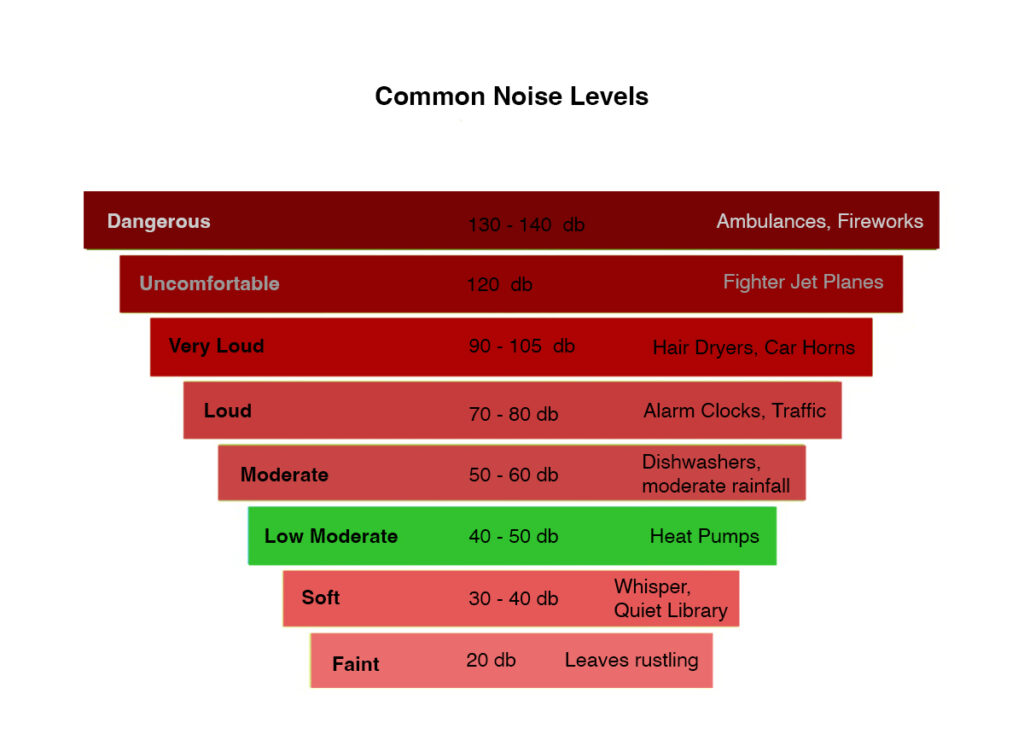
Chapter 9: Heat Pumps and Heating Bills – A Long-Term Perspective: Reaping Financial Rewards Over Time
The cost of heating is a significant consideration for homeowners. Traditional forms of heating, such as gas and oil boilers, have been the go-to solutions for many years. But with increasing energy costs and a heightened focus on sustainable alternatives, heat pumps have emerged as a frontrunner. One deterrent, however, remains: the upfront cost. Let’s delve into the economic landscape of heat pumps, balancing the initial investment against long-term savings.
- Understanding the Initial Investment:
- Upfront Costs: Installing a heat pump typically comes with a more substantial price tag compared to traditional boilers. This cost includes the unit itself, installation, and any adjustments to your home’s infrastructure.
- Grants and Incentives: The UK government recognises the environmental benefits of heat pumps and has introduced schemes like the Renewable Heat Incentive (RHI) to subsidise and encourage their adoption.
- Operational Costs – Efficiency is Key:
- Higher Efficiency: Heat pumps operate on the principle of moving heat rather than generating it. This distinction makes them remarkably efficient, often achieving efficiencies of over 300%.
- Reduced Fuel Bills: Given their efficiency, homeowners tend to experience substantial annual savings on their energy bills.
- Comparing with Traditional Systems:
- Consistent Prices: Unlike fossil fuels, whose prices can fluctuate significantly, electricity prices tend to be more stable, making it easier to budget and forecast heating costs.
- Maintenance: While regular check-ups are advised for heat pumps, their simpler mechanics and lack of combustion processes often result in lower maintenance costs over the long term.
- Long-Term Savings: Studies suggest that while the initial investment for a heat pump might be higher, homeowners can recoup this cost in savings within a few years. When viewed over a span of a decade or more, the savings can be considerable.
- Environmental Costs: While not directly impacting your wallet, there’s an undeniable economic value in adopting sustainable practices. Reduced carbon footprints could lead to fewer environmental taxes and levies in the future.
- Resale Value and Future-Proofing:
- Modern Appeal: Homes equipped with sustainable heating solutions like heat pumps are becoming increasingly attractive in the property market, potentially boosting resale value.
- Anticipating Future Regulations: With global movements towards greener solutions, future regulations might penalise or phase out less efficient heating systems. Investing in a heat pump now is a proactive step in aligning with potential future mandates.
- Real-life Testimonies: Many homeowners who have made the switch to heat pumps vouch for their financial benefits. Their experiences, documented through case studies and testimonials, provide tangible proof of the savings possible.
In conclusion, while the journey with heat pumps begins with a more substantial initial outlay, the road ahead promises consistent savings, reduced environmental impact, and future-proofing benefits. When viewed from a long-term perspective, heat pumps stand as a testament to the adage that “good things come to those who wait”.
Chapter 10: Efficiency Face-off: Heat Pumps versus Gas Boilers – The Battle for Sustainable Heating
The home heating industry has long been dominated by gas boilers. A tried and tested method, boilers have kept generations warm and toasty. However, the rise of renewable energy sources and a growing focus on sustainability has thrust heat pumps into the spotlight. With an increasing number of homes transitioning towards greener alternatives, the question arises: how do heat pumps fare when pitted against the good old gas boiler? Let’s delve deep and compare their efficiencies.
- Foundations of Efficiency:
- Heat Generation versus Heat Transfer: Traditional gas boilers generate heat through combustion, a process that inherently loses some energy. On the other hand, heat pumps simply transfer heat from one source to another, making use of existing heat, thereby being intrinsically more efficient.
- Coefficient of Performance (COP): Heat pumps often boast a COP of between 3 to 4, meaning they can produce 3 to 4 times the energy they consume. In contrast, even the most efficient gas boilers struggle to achieve a value above 1.
- Gas Consumption and Its Implications:
- Reduced Gas Demand: As suggested, heat pumps using gas electricity require approximately 1/3 less gas than traditional fossil fuel boilers for the same amount of heat. This not only leads to cost savings but also significantly reduces carbon emissions.
- Stability against Price Fluctuations: Gas prices, being susceptible to global economic and geopolitical changes, can be volatile. Using less gas not only saves money but also shields homeowners from drastic price swings.
- Environmental Impact:
- Carbon Footprint: Burning natural gas releases carbon dioxide, a greenhouse gas. While heat pumps do use electricity, which can be derived from burning fossil fuels, the transition towards greener grids means the carbon footprint of heat pumps is on a decreasing trajectory.
- Adopting Renewables: With many UK households installing solar panels or subscribing to renewable energy tariffs, the electricity used by heat pumps can be increasingly green, further reducing environmental impact.
- Longevity and Maintenance:
- Wear and Tear: The combustion process in gas boilers involves high temperatures and can, over time, degrade components faster than the more gentle operation of a heat pump.
- Maintenance Costs: With fewer moving parts and no combustion processes to deal with, heat pumps typically have lower annual maintenance costs.
- Operational Costs:
- Electricity versus Gas: While electricity prices per kWh might be higher than gas, the superior efficiency of heat pumps means homeowners can still achieve cost savings over the long run.
- Real-world Application: Numerous UK case studies show a marked reduction in annual heating bills for homes that transitioned from gas boilers to heat pumps, substantiating the efficiency claims.
In summary, while gas boilers have been the stalwarts of home heating for many years, the increasing efficiency and environmental benefits of heat pumps make them formidable competitors. As we move towards a more sustainable future, it’s crucial for homeowners to be informed of their choices, weighing the long-term benefits against short-term conveniences.
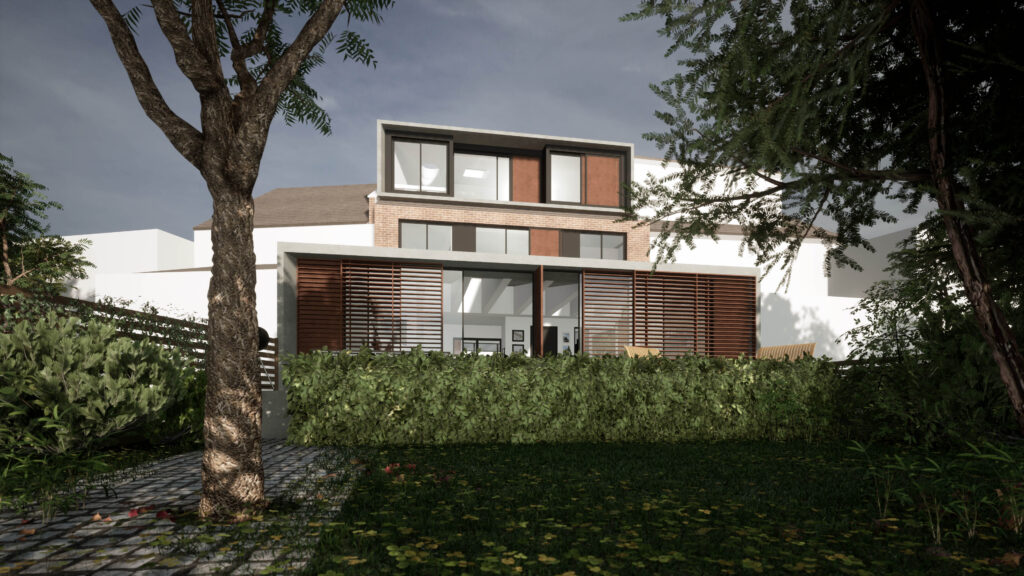
Chapter 11: The Property Value Question – How Heat Pumps Could Boost Your Home’s Worth
In recent years, homeowners and property investors alike have increasingly sought to understand how modern technologies, especially those related to sustainable energy, impact property value. Among the forefront of these technologies is the heat pump system. With an increasing emphasis on green energy and sustainable living, it’s only natural to ponder: can installing a heat pump offer more than just environmental benefits?
- Sustainability and Modern Buyer Preferences:
- Eco-conscious Buyers: As society grows more eco-conscious, many prospective homebuyers are not just looking for a beautiful property, but also for one that aligns with their green values. Homes equipped with heat pumps meet this demand.
- Reduced Energy Bills: For the pragmatic buyer, the promise of reduced energy bills offered by heat pumps is an enticing proposition.
- Insights from Savills:
- Premium Listings: Savills, a prominent estate agent, has observed that listings highlighting green energy solutions, including heat pumps, often attract higher levels of interest.
- Property Value Appreciation: Their research suggests that homes with sustainable heating solutions, like heat pumps, tend to have a higher resale value compared to those with traditional heating systems.
- Future-Proofing the Property:
- Governmental Incentives and Regulations: With governments around the world setting ambitious targets to reduce carbon emissions, regulations favouring green energy solutions are on the rise. Homes already equipped with heat pumps are poised to be ahead of the curve.
- Anticipation of Rising Energy Costs: As fossil fuels become scarcer, their cost is likely to rise. A home with a heat pump, which has lower operational costs, becomes an attractive proposition.
- The Appeal to Different Demographics:
- Young Buyers: Millennials and Gen Z, who are now entering the property market, often prioritise sustainability. A home equipped with a heat pump could be more appealing to these demographics.
- Investors: Property investors looking for homes that will appreciate in value over time are increasingly considering the energy efficiency and sustainability of a property as key factors.
- Contribution to EPC Ratings:
- Energy Performance Certificate (EPC): In the UK, properties are required to have an EPC rating, which indicates their energy efficiency. A higher rating can boost property value, and homes with heat pumps are more likely to achieve this.
- Aesthetics and Modern Appeal:
- Sleek Designs: Modern heat pumps are designed to be unobtrusive and can blend seamlessly with the aesthetics of the home, unlike some older, bulky heating systems.
- Quiet Operation: As previously discussed, many modern heat pumps operate quietly, ensuring the tranquillity of the home environment.
In conclusion, while the primary motive for many homeowners to install heat pumps might be environmental responsibility or reduced energy bills, the potential boost in property value cannot be ignored. As the property market evolves, it’s clear that homes with sustainable features, including heat pumps, stand out in the crowd. Whether viewed from a homeowner’s perspective or that of an investor, heat pumps present a compelling case for consideration.
Chapter 12: Grid Compatibility – A Nuanced View on Heat Pumps and the National Infrastructure
As the conversation surrounding renewable energy and sustainable heating solutions intensifies, questions about grid compatibility inevitably arise. How well can our existing electrical grid support a countrywide transition to heat pumps? While there’s a general belief that the grid may not be entirely equipped for large-scale heat pump adoption, the reality is more complex and offers room for optimism.
- Current Grid Capacity and Heat Pumps:
- Robust Infrastructure: The UK’s electrical grid is already one of the most advanced and robust in the world. It’s designed to handle spikes in demand and diverse sources of energy.
- Limited Strain from Individual Units: Modern heat pumps are incredibly efficient. An individual unit, even at peak operation, would place minimal strain on the grid.
- Potential Challenges with Mass Adoption:
- Peak Demand Issues: If a significant proportion of the population simultaneously used heat pumps, especially during peak demand periods in winter, the grid might experience strain.
- Localised Strains: Some local grids, particularly in older residential areas, might be more susceptible to challenges due to an influx of heat pumps.
- Grid Investments – Future-Proofing the Infrastructure:
- Smart Grid Technologies: The future lies in smart grids that can adapt to demand in real time, allowing for dynamic power distribution based on demand.
- Renewable Energy Integration: As the UK continues to invest in wind, solar, and other renewable sources, the grid will need to evolve to manage this influx of green energy effectively.
- Grid Storage Solutions: Advancements in battery technology mean we can store excess energy for periods of high demand, reducing strain on the grid.
- Benefits of Heat Pumps to the Grid:
- Load Balancing: Heat pumps can help in load balancing, especially if paired with smart controllers that can adjust operations based on grid demand.
- Integration with Decentralised Energy Systems: As communities invest in local renewable energy solutions, heat pumps can integrate seamlessly, reducing dependency on the national grid.
- The Role of Policy and Government:
- Incentivising Grid Upgrades: Government incentives can spur investments in grid infrastructure, ensuring it’s ready for the future.
- Promoting R&D: Research and development in both heat pump technology and grid solutions can alleviate many potential challenges.
- Consumer Education: Informing the public about peak demand periods and encouraging off-peak heat pump operation can be an interim solution as the grid modernises.
- Examples from Other Countries:
- Lessons from Norway and Denmark: These countries have seen widespread adoption of heat pumps and have invested in grid infrastructure and technology to ensure smooth operations.
In summation, while concerns about grid compatibility are valid, they’re by no means insurmountable. With the right investments, policy interventions, and technological advancements, the UK’s grid can not only accommodate but thrive with a large-scale transition to heat pumps. As the nation continues its journey towards a more sustainable future, embracing and adapting to such changes becomes not just desirable but imperative.
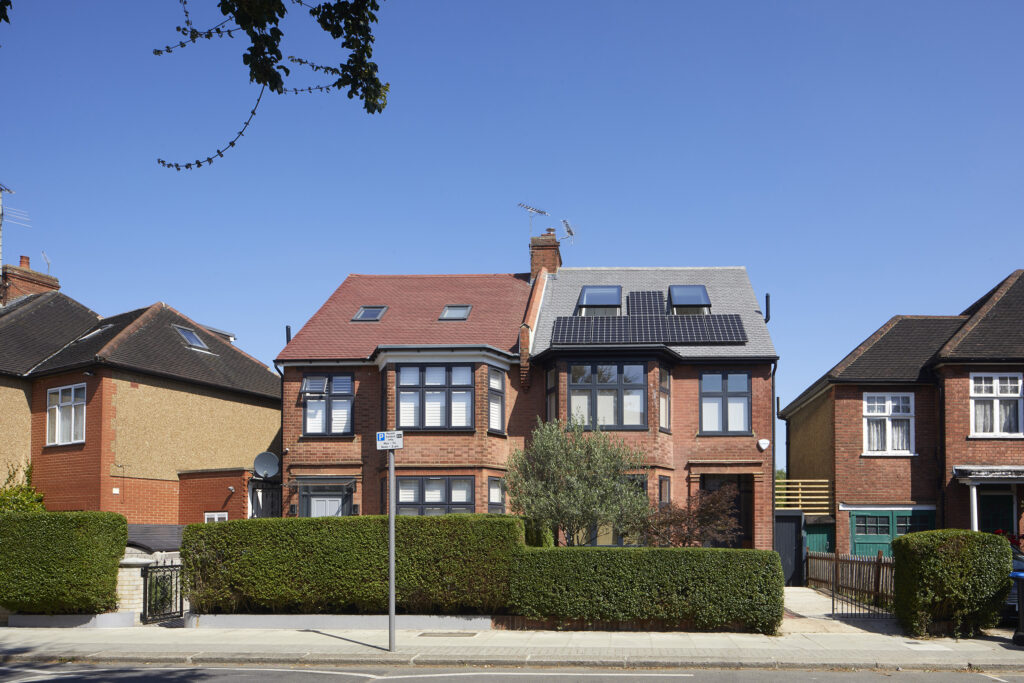
Chapter 13: The Diversity of Low-Carbon Solutions – Exploring the Sustainable Energy Palette
As the world grapples with the challenge of climate change, it becomes paramount to diversify our energy solutions. Though heat pumps are undeniably a crucial cog in the sustainability wheel, they’re but one of several low-carbon solutions. In this chapter, we’ll journey through various alternatives and their potential for creating a balanced and eco-friendly future.
- Solar Power – Harnessing the Sun:
- Photovoltaic (PV) Solar Panels: These panels convert sunlight directly into electricity. The decreasing costs of PV technology and its adaptability, from rooftops to vast solar farms, make it a popular choice.
- Solar Thermal Systems: These are designed to capture and store heat from the sun, which can be used for domestic heating or electricity generation.
- Wind Energy – Riding the Breezes:
- Onshore Wind Farms: Situated on land, these are more common and offer high energy yields. Their presence has become a prominent feature in many landscapes across the UK.
- Offshore Wind Farms: Positioned out at sea where winds are often stronger and more consistent, these farms have significant energy potential, albeit at a higher initial investment.
- Hydroelectric Power – Tapping Water’s Might:
- Large-scale Hydro: This involves building massive dams, which store water in reservoirs. Releasing this water powers turbines to generate electricity.
- Small-scale Hydro and Run-of-River: These methods don’t require large reservoirs, making them suitable for smaller water bodies.
- Bioenergy – The Organic Touch:
- Biomass: This involves using organic materials, like wood or agricultural waste, to produce heat or electricity.
- Biogas: Derived from the decomposition of organic matter, this gas can be utilised to generate electricity or as a substitute for natural gas.
- Tidal and Wave Energy – The Rhythms of our Oceans:
- Tidal Barrages and Lagoons: Structures built across tidal estuaries capture the energy from water levels rising and falling.
- Wave Energy Converters: These devices harness the energy from ocean waves, converting it into electricity.
- Geothermal Energy – Earth’s Inner Warmth:
- Deep Geothermal: Drilling deep into the Earth’s crust, this method captures the heat from magma activities, converting it to electricity.
- Shallow Geothermal Systems: These involve pipes buried close to the surface, transferring the steady temperatures from the ground to buildings.
- The Role of Energy Storage:
- Battery Technology: As renewable sources can be intermittent, batteries can store excess energy for when it’s needed.
- Pumped Storage: Uses excess electricity to pump water to a higher reservoir, releasing it to generate electricity when demand rises.
- Combining Technologies for Greater Efficiency:
- Hybrid Systems: Pairing technologies, such as solar panels with wind turbines or heat pumps, can maximise energy capture and utilisation.
- Smart Grids and Microgrids: These systems can intelligently distribute energy from diverse sources, ensuring consistent power supply.
In conclusion, while heat pumps hold a prominent position in the sustainable landscape, a multifaceted approach is essential. Embracing a diversity of low-carbon solutions will bolster our resilience against energy challenges and pave the way for a greener, more sustainable future. The key lies in understanding the interplay of these technologies and integrating them effectively into our lives and infrastructure.
Chapter 14: Heat Pumps in Small Apartments – Busting the Size Myth
In the vast tapestry of urban living, small apartments and tower blocks have become synonymous with modern life. Yet, when it comes to heating solutions for these living spaces, there’s a common misconception that heat pumps might not be suitable due to their size or capacity. However, the evolution of heat pump technology tells a different tale, firmly establishing that size, indeed, isn’t a limitation.
- Compact Design Innovations:
- Tailored for the Urban Dweller: Today’s market features a plethora of heat pump models designed specifically for smaller spaces. They come in sleek, compact designs that can be easily integrated without sacrificing room aesthetics or space.
- Wall-mounted Units: For apartments with limited floor space, wall-mounted heat pump units can be a perfect fit, blending effortlessly with the interior decor.
- Centralised Systems for Tower Blocks:
- Large Scale, Greater Efficiency: Contrary to popular belief, one large heat pump can serve an entire tower block. By centralising the heating system, it’s possible to achieve consistent warmth across multiple dwellings.
- Reduced Maintenance: A centralised system means fewer individual units to maintain, resulting in reduced upkeep costs and a longer overall lifespan.
- Zone-specific Temperature Control:
- Adaptable Heating: Modern heat pumps in apartment complexes can be adjusted to provide different temperatures in various zones, ensuring the comfort of each resident.
- Smart Integration: With the rise of smart home systems, residents can now adjust and monitor their apartment’s temperature remotely, offering both convenience and energy savings.
- Noise Reduction Features:
- Quiet Operation: One potential concern for urban dwellers might be the noise. Thankfully, many of the newer models are designed for hushed operation, ensuring minimal disturbance to residents.
- Strategic Installation: By placing the external unit of the heat pump in an optimal location, any noise generated can be further minimised.
- Energy Efficiency in Compact Living:
- Lower Energy Bills: Heat pumps, with their efficiency, can help apartment dwellers reduce their monthly energy bills.
- Sustainable Living: For those residing in apartments and keen on reducing their carbon footprint, heat pumps present an eco-friendly alternative to traditional heating systems.
- Challenges and Considerations:
- Installation: While it’s feasible to install heat pumps in tower blocks and apartments, it’s vital to involve professionals for a seamless and efficient setup.
- Ductwork and Ventilation: Older buildings might require modifications to accommodate the heat pump’s ductwork or ventilation systems.
In conclusion, the versatility of heat pumps shatters the misconception that they’re only suited for larger homes or spaces. Whether you reside in a cosy studio flat or a sprawling tower block, there’s a heat pump solution tailored to fit your needs. As the push for sustainable living grows, embracing heat pumps in urban settings will play a pivotal role in our journey towards a greener future.
Chapter 15: Tackling the Fossil Fuel Electricity Myth – A Greener Perspective on Heat Pumps
A common concern when discussing heat pumps centres around the source of their electricity. Many argue, “Aren’t they running on electricity derived from fossil fuels?” This question has been the epicentre of numerous debates. However, the landscape of energy production and consumption has transformed considerably in recent times, shedding new light on the eco-friendly credentials of heat pumps.
- A Shift in Energy Production:
- Surge in Renewables: Over the past decade, there’s been a significant global push towards renewable energy sources. Solar, wind, and hydroelectricity have gained traction, with many countries actively increasing their renewable energy capacity.
- Reducing Reliance on Fossil Fuels: As the grid evolves, the proportion of electricity sourced from coal and gas plants is gradually diminishing. This transition directly impacts the environmental footprint of appliances running on grid electricity, including heat pumps.
- Heat Pumps and Their Efficiency:
- Coefficient of Performance (COP): Heat pumps are lauded for their high COP, meaning they often produce more heat energy than the electrical energy they consume. This efficiency further reduces their overall environmental impact.
- Less Energy, More Heat: Compared to traditional electric heaters, which have a COP close to 1, heat pumps can achieve COP values of 3 or higher, signifying three times the heat output for the same energy input.
- The Integration with Green Technology:
- Solar-Powered Heat Pumps: Many homeowners are now combining solar panels with heat pumps. This amalgamation ensures the heat pump runs on clean, green solar energy, further reducing carbon emissions.
- Smart Grids and Heat Pumps: Advanced grids can draw predominantly from renewable sources during peak times, ensuring that heat pumps utilise greener electricity.
- Comparing Carbon Footprints:
- Traditional Heating vs Heat Pumps: Even if a heat pump uses electricity from the grid, which may have a fossil fuel component, its efficiency often results in lower carbon emissions than conventional oil or gas boilers.
- The Greenhouse Gas Argument: As heat pumps replace conventional heating methods, the potential for reduced greenhouse gas emissions is significant.
- The Evolution of Heat Pump Technology:
- Eco-friendly Refrigerants: Modern heat pumps use refrigerants with lower Global Warming Potential (GWP), further bolstering their green credentials.
- Enhanced Performance: With technological advancements, heat pumps are becoming more efficient, demanding even less electricity for the same output.
- The Road Ahead – A Greener Promise:
- Governments and Policies: With global pacts targeting climate change, governments are incentivising the use of renewable energy and green technologies, promising a brighter future for heat pumps.
- Consumer Awareness: As more people become educated about the actual energy makeup of their electricity and the efficiency of heat pumps, the shift towards this greener heating solution is poised to accelerate.
In conclusion, while the fossil fuel electricity myth has had some basis in past realities, the narrative is rapidly changing. Heat pumps, especially in conjunction with the evolving energy grid, represent a promising step forward in our collective quest for sustainability. Their rising alignment with renewable energy sources dispels long-held myths and positions them as a cornerstone for a greener tomorrow.
Chapter 16: Power Cuts – A Universal Setback: The Shared Vulnerability of Modern Heating Systems
The notion of power cuts often conjures images of darkened homes, halted productivity, and a sudden, albeit temporary, return to pre-electricity times. Among the many systems affected by power cuts, heating systems play a crucial role, especially during colder months. Contrary to popular belief, not just electrically driven heat pumps but even gas boilers are not immune to these interruptions, placing both on a level playing field when it comes to this challenge.
- The Universality of Power Dependence:
- Heat Pumps: As electric devices, it’s understandable that heat pumps would cease to function during a power cut. They rely on electricity to transfer heat from one place to another, so any disruption means an immediate halt.
- Gas Boilers: While one might assume gas boilers, being gas-powered, are unaffected by power cuts, this isn’t the case. Modern gas boilers depend on electricity for ignition, pumps, and other internal systems. A power cut means they too cannot operate as intended.
- The Impact of Power Outages:
- Immediate Comfort: In the absence of heating, the indoor environment can swiftly become uncomfortable, especially during extreme weather conditions.
- Health Concerns: Extended periods without heating in cold seasons can be hazardous, especially for vulnerable groups such as the elderly or young children.
- System Restarts: When power returns, there’s often a surge in demand, which can place strain on both heat pumps and gas boilers. Modern systems usually have safeguards to manage this, but it’s always advisable to check.
- Backup Solutions and Preparations:
- Battery Backup Systems: These can keep a heating system running for a limited time during power cuts, providing a buffer against extended outages.
- Manual Overrides: Some advanced heating systems come equipped with manual overrides that allow basic functionality even during a power outage.
- Alternative Heating: Portable heaters (battery or gas-powered) can be valuable in emergencies, offering a temporary solution while the primary heating system is down.
- The Broader Infrastructure Challenge:
- Grid Resilience: Power cuts, particularly recurrent or prolonged ones, raise questions about grid stability and infrastructure investment. Both public and private sectors have roles to play in improving resilience.
- Localised Solutions: Solar panels with battery storage or localised micro-grids can offer insulation from broader grid failures, ensuring consistent power supply.
- A Call for Consumer Awareness:
- Understanding Vulnerabilities: By understanding the vulnerabilities of their heating systems, consumers can take proactive measures, like having backup systems in place.
- Maintenance and Upgrades: Regular maintenance can help in ensuring that heating systems respond better to power cuts and resume operation efficiently when power returns.
In conclusion, while power cuts pose challenges to both heat pumps and gas boilers, the setback is by no means exclusive to one or the other. It’s a shared vulnerability in our modern, interconnected world. Through informed decisions, preparedness, and a combined effort to bolster infrastructure resilience, we can mitigate the impact of these disruptions and ensure consistent warmth and comfort.
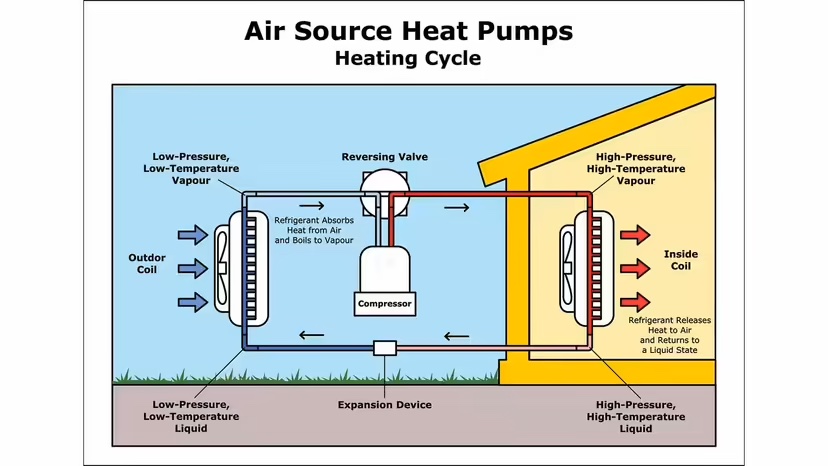
Chapter 17: Operational Cycle Explained: Demystifying the Heat Pump’s Modus Operandi
The inner workings of heat pumps can seem intricate and, at times, perplexing for the uninitiated. However, understanding their operational cycle is key to grasping why, despite appearing to be always ‘on’, they don’t operate unceasingly. Let’s delve into the mechanics and logic behind this fascinating piece of technology.
- The Basics of Heat Pumps:
- Principle of Operation: At its core, a heat pump is a device that moves heat from one place to another using a minimal amount of energy. It can draw heat from the air, ground, or water and amplify it for use in heating homes.
- Components Involved: The main parts of a heat pump include the evaporator, compressor, condenser, and expansion valve. Together, they facilitate the movement and amplification of heat.
- Always ‘On’ but Not Always Operating:
- Standby Mode: Much like many modern electronic devices, heat pumps might remain in a standby mode when not actively heating. This allows them to quickly respond when heating is needed.
- Cyclical Operation: Depending on the set temperature and the actual room temperature, the heat pump will cycle on and off, ensuring consistent warmth without wastage.
- Adjusting to Temperature Requirements:
- Thermostatic Controls: Modern heat pumps come equipped with thermostatic controls, which sense the room’s temperature and adjust the heating output accordingly.
- Variable Speed Compressors: Some advanced heat pumps use variable speed compressors. Instead of switching off entirely, they can adjust their operational intensity based on demand.
- Energy Efficiency and Consistent Heating:
- Minimising On/Off Cycles: Frequently switching on and off can be energy-intensive. By maintaining a consistent operational rhythm, heat pumps can offer more energy-efficient heating.
- Consistent Comfort: A heat pump’s ability to adjust its operation based on temperature requirements ensures that indoor conditions remain consistently comfortable.
- Longevity and Wear:
- Reducing Strain: Continuously starting and stopping can place strain on mechanical components. The moderated operational cycle of heat pumps reduces this wear and tear, potentially extending the system’s lifespan.
- Maintenance Cycles: Regular servicing ensures that the heat pump’s components remain in prime condition, further promoting efficient operation.
- Cost Implications:
- Lower Operational Costs: By adjusting operations to real-time requirements and avoiding unnecessary on/off cycles, heat pumps can lead to notable savings in energy bills over time.
- Capitalising on Off-Peak Rates: Some homeowners use heat pumps in conjunction with time-of-use electricity tariffs, capitalising on off-peak rates for even greater savings.
In conclusion, the operational cycle of a heat pump is a testament to the advanced engineering and design considerations that have gone into modern systems. These devices are finely tuned to provide optimum comfort with maximum efficiency. By understanding their modus operandi, users can better appreciate the benefits and, where possible, further optimise their use for both comfort and cost savings.
Chapter 18: The Integral Role of Insulation: Beyond Just Keeping the Heat In
It’s no secret that insulation is a vital aspect of any home’s energy efficiency. However, when discussing heat pumps, the importance of insulation becomes all the more pronounced. While it’s entirely possible to use a heat pump in a space that lacks proper insulation, one must ask the question: Is it the most effective way to utilise the technology? Here, we’ll explore how insulation and heat pumps work in tandem, amplifying the benefits of each other.
- Understanding Insulation:
- Basic Principle: Insulation works by slowing the rate at which heat escapes from a building. Well-insulated properties maintain their internal temperatures more effectively, reducing the demand on heating systems.
- Types of Insulation: Whether it’s loft insulation, cavity wall insulation, or floor insulation, each type plays a distinct role in sealing in warmth and improving energy efficiency.
- Heat Pumps in Uninsulated Spaces:
- Feasibility: Yes, heat pumps can function and provide warmth in spaces without adequate insulation. However, their task becomes Herculean, as they must work harder to compensate for the rapid heat loss.
- Operational Costs: Uninsulated spaces lead to more frequent and prolonged heat pump operation, which can result in higher electricity bills.
- Synergy of Heat Pumps and Insulation:
- Improved Efficiency: Insulation enhances a heat pump’s efficiency by ensuring that less heat is lost from the space. The pump doesn’t have to work as hard, thereby consuming less energy.
- Consistent Temperatures: With reduced heat loss, indoor temperatures remain more consistent, offering improved comfort.
- Extended System Life: Reducing the strain on the heat pump can also extend its lifespan, as wear and tear on the system components decrease.
- Cost Implications:
- Short-term vs. Long-term: While insulating a home or space may come with initial costs, the long-term savings, thanks to reduced operational costs of the heat pump, can quickly justify the investment.
- Potential Grants and Incentives: Given the UK’s push towards energy efficiency, there are often grants, incentives, or schemes available to offset the cost of installing insulation.
- Beyond Energy Efficiency:
- Soundproofing: A side benefit of insulation is its ability to soundproof spaces, leading to quieter living environments.
- Environmental Benefits: Reducing energy consumption is pivotal in the fight against climate change. A well-insulated home combined with an efficient heat pump reduces greenhouse gas emissions.
While the marvel of heat pump technology can indeed warm up even the coldest, least insulated of spaces, it’s not the most effective or economic method of utilising the system. Insulation plays an indispensable role, not just as a partner to heat pumps, but as a fundamental element in any holistic approach to energy efficiency and environmental stewardship. The synergy between the two offers homeowners and property developers alike an opportunity to truly harness the full potential of modern heating technologies.
Chapter 19: Heat Pumps’ Lifespan: A Long-Term Investment
The question of longevity is often at the forefront of homeowners’ minds when considering a significant investment like a heat pump. This chapter will address the misconception surrounding the lifespan of heat pumps and shed light on how proper care and maintenance can not only extend their operational life but also ensure they run efficiently throughout.
- Setting the Record Straight:
- Common Myths: Some individuals are under the impression that heat pumps have a limited lifespan, making them a less attractive investment when compared to traditional heating systems.
- The Reality: With technological advancements and robust designs, modern heat pumps are built to last. Given the right conditions and care, a lifespan of 15-20 years is well within reach.
- Factors Affecting Lifespan:
- Installation Quality: A well-executed installation lays the foundation for a heat pump’s long and efficient operational life. Choosing accredited professionals is crucial.
- Usage Patterns: A heat pump that’s overburdened due to incorrect sizing or constant high-demand cycles may exhibit signs of wear faster.
- Maintenance Regimen: As with any machinery, neglect can shorten the lifespan. Regular checks and servicing are paramount.
- The Maintenance Imperative:
- Annual Checks: A yearly professional examination can detect and rectify minor issues before they escalate.
- Self-Care: Homeowners can undertake simple tasks like cleaning and ensuring there are no obstructions around the unit.
- Replacement Parts: Over time, specific components might need replacement. Genuine, high-quality parts ensure the heat pump remains in top condition.
- Benefits of Longevity:
- Return on Investment: The longer a heat pump serves a household, the more value is extracted from the initial outlay, making it a cost-effective choice in the long run.
- Sustainable Living: Reducing the need for replacements means fewer resources are used for manufacturing new units, promoting sustainability.
- When Replacement Becomes Inevitable:
- Signs to Watch: Reduced efficiency, increased noise levels, or frequent breakdowns may hint it’s time for a new unit.
- Upgrading: Technology constantly evolves. After two decades, homeowners might find newer models on the market with enhanced features and improved efficiency.
The belief in the short lifespan of heat pumps is a relic of the past. Today’s units, when installed correctly and cared for diligently, can comfortably serve households for two decades or even longer. Not only does this present a compelling economic case for their adoption, but it also underscores their value as a resilient and sustainable solution for modern heating needs. The longevity of heat pumps is yet another feather in their cap, solidifying their position as a cornerstone of the future of home heating.
Chapter 20: Carbon Emissions – A Balanced View: Understanding the True Environmental Impact
Climate change is one of the defining challenges of our time, and every decision, especially related to energy consumption, has a part to play. For homeowners and businesses considering a transition to renewable technologies, understanding the full carbon footprint is essential. Heat pumps are often lauded for their eco-friendliness, but there’s more to the story.
- Manufacturing Emissions: The Initial Carbon Cost:
- Carbon Footprint: The manufacturing process of heat pumps, like any industrial product, involves a certain degree of carbon emissions. These are primarily due to the materials used and the energy consumed during production.
- A Common Concern: Some critics highlight this production footprint, suggesting that heat pumps might not be as green as portrayed.
- Offsetting the Carbon Footprint:
- Efficiency in Operation: Heat pumps are remarkably energy efficient, often converting 1 unit of electricity into 3 or more units of heat. This efficiency drastically reduces their operational emissions when compared to conventional heating systems.
- Break-even Point: Research suggests that the carbon emissions from manufacturing a heat pump are entirely offset after just 13 months of usage, a remarkably short time considering the device’s lifespan.
- Comparative Analysis:
- Traditional Heating: Fossil-fuel-based heating systems not only have manufacturing emissions but also continue to emit significant greenhouse gases throughout their operational life.
- The Renewable Edge: When paired with a renewable energy source, such as solar or wind, the carbon footprint of a heat pump diminishes further, making it a compelling choice for eco-conscious individuals.
- The Broader Picture: Lifecycle Emissions:
- Decommissioning and Recycling: The end of a heat pump’s life doesn’t mean the end of its environmental impact. Recycling components and proper disposal can further reduce its overall carbon footprint.
- Innovation and Progress: As technology progresses, we can anticipate even lower manufacturing emissions in future models, reinforcing the environmental case for heat pumps.
- The Role of Policymakers and Manufacturers:
- Incentivising Green Manufacturing: Governments can play a pivotal role by offering incentives to companies that adopt low-carbon manufacturing processes.
- Consumer Awareness: Making consumers aware of the lifecycle carbon costs can drive demand for greener products, pushing manufacturers to innovate.
While it’s crucial to acknowledge the carbon emissions from manufacturing heat pumps, a balanced view reveals their exceptional environmental merits. The speed at which these devices offset their initial carbon footprint, coupled with their potential for even greener operation in tandem with renewable energy sources, underscores their role in a low-carbon future. In the quest for sustainable heating solutions, heat pumps emerge not just as a viable option, but as a leading contender.
Conclusion: Charting the Path to a Sustainable Tomorrow through Enlightened Choices
In the face of an impending environmental crisis, the choices we make today will reverberate for generations to come. The journey towards sustainability, though fraught with challenges and misconceptions, is not only necessary but also achievable. And at the heart of this transition lies the adoption of efficient, green technologies, such as heat pumps.
- Debunking Myths to Foster Adoption:
- Informed Decisions: Dispelling myths is more than just a matter of setting the record straight. It enables homeowners, businesses, and policymakers to make informed, impactful decisions based on facts, not misconceptions.
- Real-life Examples: Throughout our exploration, we’ve witnessed how heat pumps have functioned seamlessly in diverse climates, from the chilly Swiss Alps to the urban sprawl of UK cities. They’ve been efficient in Victorian houses, tower blocks, and modern homes alike.
- More than Just Heat Pumps:
- Holistic Approach: While heat pumps are a pivotal piece of the puzzle, it’s essential to understand that they are part of a broader eco-system of green technologies. Solar panels, wind turbines, and efficient building designs all contribute to our shared goal.
- Interconnected Solutions: These technologies don’t just co-exist; they can amplify each other’s benefits. A home equipped with solar panels, for instance, can power a heat pump, creating a cycle of sustainable energy.
- Towards Net-Zero Carbon Emissions:
- Individual Responsibility: Every homeowner or business that chooses to adopt green technologies contributes to the bigger picture. These collective efforts culminate in significant strides towards achieving net-zero carbon emissions.
- Governmental Role: Legislation, incentives, and public awareness campaigns can further accelerate the shift, ensuring a cohesive national effort.
- The Vision of a Greener Tomorrow:
- Beyond Technology: Embracing a sustainable future is not just about technology. It’s about changing our mindsets, cultivating an ethos of environmental responsibility, and understanding that every action counts.
- Legacy for Future Generations: By championing green solutions now, we’re not only improving our quality of life but bequeathing a legacy of a cleaner, healthier planet to future generations.
In conclusion, as we stand on the cusp of change, we have a choice. We can let misconceptions guide us, or we can seek clarity, understand the true potential of eco-friendly technologies like heat pumps, and forge ahead. The path has been charted; it’s now up to us to walk it, hand in hand, towards a brighter, greener future.
If you would like to talk through your project with the team, please do get in touch at mail@risedesignstudio.co.uk or give us a call on 020 3290 1003
RISE Design Studio Architects company reg no: 08129708 VAT no: GB158316403 © RISE Design Studio. Trading since 2011.

